NEWS
The latest news and events in the field of Victorian cinema.
Stephen Herbert (September 2023)
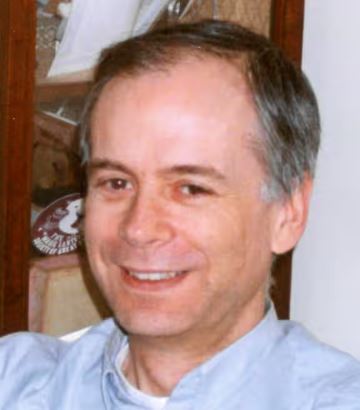 Stephen Herbert, co-editor of this site and the Who's Who of Victorian Cinema book, died 3 September 2023. Stephen was an exceptional person. He was head of technical services at the National Film Theatre and the Museum of the Moving Image, then became a publisher (The Projection Box), writer (Industry Liberty and a Vision: Wordsworth Donsithrope's Kinesigraph, Theodore Brown's Magic Pictures, Eadweard Muybridge: The Kingston Museum Bequest), editor (A History of Pre-Cinema, A History of Early Film, A History of Early Television), web publisher (The Compleat Eadweard Muybridge, The Optilogue), consultant, lecturer, academic, programmer, projectionist, lanternist and much more. He was also the best of friends. There is a listing of his career achievements on The Optilogue and an obituary in The Guardian. For everything Stephen, thank you.
Stephen Herbert, co-editor of this site and the Who's Who of Victorian Cinema book, died 3 September 2023. Stephen was an exceptional person. He was head of technical services at the National Film Theatre and the Museum of the Moving Image, then became a publisher (The Projection Box), writer (Industry Liberty and a Vision: Wordsworth Donsithrope's Kinesigraph, Theodore Brown's Magic Pictures, Eadweard Muybridge: The Kingston Museum Bequest), editor (A History of Pre-Cinema, A History of Early Film, A History of Early Television), web publisher (The Compleat Eadweard Muybridge, The Optilogue), consultant, lecturer, academic, programmer, projectionist, lanternist and much more. He was also the best of friends. There is a listing of his career achievements on The Optilogue and an obituary in The Guardian. For everything Stephen, thank you.
Saying goodbye (December 2020)
 After seventeen years as a website, and seven years before that as a book only, Who's Who of Victorian Cinema is no longer going to be updated. The editors have decided to leave the site as it is, adding a banner on every page that says that the site has been archived and is not being updated. It has proven too much of a task to keep the site up-to-date when we are both much occupied with other projects, and it had to halt at some point. It will stay online as a reference source, though like all other refrences source users should double-check the information elsewhere if they can. Our great thanks to all those who have contributed to book and site over twenty-four years, with a special thought for those contributors who are no longer with us. There are archived versions of the site on the Internet Archive and the UK Web Archive, so one way or another it will live on. Thank you especially to all our readers. We hope it has been useful.
Luke and Stephen
After seventeen years as a website, and seven years before that as a book only, Who's Who of Victorian Cinema is no longer going to be updated. The editors have decided to leave the site as it is, adding a banner on every page that says that the site has been archived and is not being updated. It has proven too much of a task to keep the site up-to-date when we are both much occupied with other projects, and it had to halt at some point. It will stay online as a reference source, though like all other refrences source users should double-check the information elsewhere if they can. Our great thanks to all those who have contributed to book and site over twenty-four years, with a special thought for those contributors who are no longer with us. There are archived versions of the site on the Internet Archive and the UK Web Archive, so one way or another it will live on. Thank you especially to all our readers. We hope it has been useful.
Luke and Stephen
Richard Brown (January 2020)
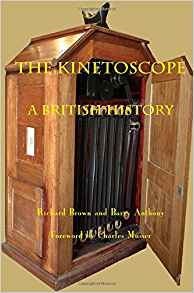 It is very sad to have to report the death on 31 January 2020 of Richard Brown, a leading expert in early British cinema and one of the contributors to the Who's Who of Victorian Cinema book and website. He was a freelance historian and co-author with Barry Anthony of A Victorian Enterprise: The History of the British Mutoscope and Biograph Company, 1897-1915 (1999) and The Kinetoscope: A British History (2017). His speciality was the economics of the early film business, to which he brought a rigour and clarity which had seldom seen before in film studies. Known for being resolutely un-digital, his typewritten letters were legendary. He was a tireless researcher and always genial company. He will be much missed.
It is very sad to have to report the death on 31 January 2020 of Richard Brown, a leading expert in early British cinema and one of the contributors to the Who's Who of Victorian Cinema book and website. He was a freelance historian and co-author with Barry Anthony of A Victorian Enterprise: The History of the British Mutoscope and Biograph Company, 1897-1915 (1999) and The Kinetoscope: A British History (2017). His speciality was the economics of the early film business, to which he brought a rigour and clarity which had seldom seen before in film studies. Known for being resolutely un-digital, his typewritten letters were legendary. He was a tireless researcher and always genial company. He will be much missed.
Identity of 1895 Derby film confirmed (September 2019)
 In 1995 a collection of 1890s films came to the British Film Institute, donated by Ray Henville, a collector of vintage radios. Several were identified as being the work of Birt Acres. One film in particular excited much interest, as it appeared to show the Derby race of 1895. The film was identified through a comparison with contemporary reports of the race and the jockeys' colours, but without contemporary visual confirmation it was impossible absolutely to be certain. Twenty-four years later, theatre and film historian Barry Anthony has uncovered an image taken from Acres' film which clearly corresponds with the print held by the BFI. The image, which is heavily retouched and printed the wrong way round, with the background removed, was found in The Field, 21 September 1895, p. 510, submitted by one IMPECUNIOSUS (a horse-racing enthusiast), who writes that it shows the closing stage of that year's Derby (the original image, the image flipped, and a still from the film can be seen here). In a later issue of the same jounal (5 October) Acres complains that the image had been used without his permission. The Field is available on the British Newspaper Archive subscription site.
In 1995 a collection of 1890s films came to the British Film Institute, donated by Ray Henville, a collector of vintage radios. Several were identified as being the work of Birt Acres. One film in particular excited much interest, as it appeared to show the Derby race of 1895. The film was identified through a comparison with contemporary reports of the race and the jockeys' colours, but without contemporary visual confirmation it was impossible absolutely to be certain. Twenty-four years later, theatre and film historian Barry Anthony has uncovered an image taken from Acres' film which clearly corresponds with the print held by the BFI. The image, which is heavily retouched and printed the wrong way round, with the background removed, was found in The Field, 21 September 1895, p. 510, submitted by one IMPECUNIOSUS (a horse-racing enthusiast), who writes that it shows the closing stage of that year's Derby (the original image, the image flipped, and a still from the film can be seen here). In a later issue of the same jounal (5 October) Acres complains that the image had been used without his permission. The Field is available on the British Newspaper Archive subscription site.
The Living Picture Craze: An Introduction to Victorian Film (July 2019)
 The British Film Institute, supported by the Bill Douglas Centre and the University of Exeter, have launched an online course entitled The Living Picture Craze: A Introduction to Victorian Film. Hosted as one of the online course made available by Futurelearn, the three-week course will investigate the late Victorian period in Britain, examine what Victorian films reveal about the society that produced them, see how film became a key medium to explore a rapidly-changing world, and explore what contemporary audiences watched and why. The presenters are Mark Reid, Gemma Starkey and Bryony Dixon. The course begins on 2 September 2019. For more information, see https://www.futurelearn.com/courses/victorian-film/1.
The British Film Institute, supported by the Bill Douglas Centre and the University of Exeter, have launched an online course entitled The Living Picture Craze: A Introduction to Victorian Film. Hosted as one of the online course made available by Futurelearn, the three-week course will investigate the late Victorian period in Britain, examine what Victorian films reveal about the society that produced them, see how film became a key medium to explore a rapidly-changing world, and explore what contemporary audiences watched and why. The presenters are Mark Reid, Gemma Starkey and Bryony Dixon. The course begins on 2 September 2019. For more information, see https://www.futurelearn.com/courses/victorian-film/1.
Victorian film on BFI Player (May 2019)
 The British Film Institute has put 700 British films from the Victorian era (to 1901) on the BFI Player for free, thanks to funding from The National Lottery Heritage Fund. The collection includes events such as the Anglo-Boer War and Queen Victoria's Diamond Jubilee; renowned figures of the time including Queen Victoria, the future Edward VII, Tsar Nicholas II, Pope Leo XIII, W.G. Grace, Prince Ranjitsinhji, Herbert Campbell, and Herbert Beerbohm Tree; and the work of such filmmakers as Birt Acres, Robert Paul, W.K-L. Dickson, James Williamson, Walter Booth, G.A. Smith, Cecil Hepworth, Walter Gibbons and Charles Urban. The BFI has also announced its Victorian Film Weekender, taking place 101-12 May and collaborations with two television sseries: BBC Four's Victorian Sensations and CBBC's Horrible Histories. All of this is to mark the 200th anniversary of the birth of Queen Victoria.
The British Film Institute has put 700 British films from the Victorian era (to 1901) on the BFI Player for free, thanks to funding from The National Lottery Heritage Fund. The collection includes events such as the Anglo-Boer War and Queen Victoria's Diamond Jubilee; renowned figures of the time including Queen Victoria, the future Edward VII, Tsar Nicholas II, Pope Leo XIII, W.G. Grace, Prince Ranjitsinhji, Herbert Campbell, and Herbert Beerbohm Tree; and the work of such filmmakers as Birt Acres, Robert Paul, W.K-L. Dickson, James Williamson, Walter Booth, G.A. Smith, Cecil Hepworth, Walter Gibbons and Charles Urban. The BFI has also announced its Victorian Film Weekender, taking place 101-12 May and collaborations with two television sseries: BBC Four's Victorian Sensations and CBBC's Horrible Histories. All of this is to mark the 200th anniversary of the birth of Queen Victoria.
Paul exhibition (April 2019)
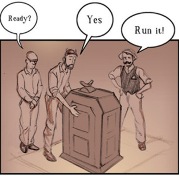 Bruce Castle Museum in Haringey, London is hosting an exhibiion on the British film pioneer and local resident Robert Paul. The exhibition marks the 150th anniversary of Paul's birth and has been put together by Who's Who of Victorian Cinema contributor Ian Christie of Birkbeck, University of London. Launched alongside the exhibition is a graphic novel on Paul's film achievements produced by Christie and comic artist ILYA. Christie's biography of Robert Paul will be published by Chicago University Press in November 2019. The exhibition runs 5 April-July 2019. There is more information on the Bruce Castle Museum site and on Christie's blog Paul's Animatograph Works.
Bruce Castle Museum in Haringey, London is hosting an exhibiion on the British film pioneer and local resident Robert Paul. The exhibition marks the 150th anniversary of Paul's birth and has been put together by Who's Who of Victorian Cinema contributor Ian Christie of Birkbeck, University of London. Launched alongside the exhibition is a graphic novel on Paul's film achievements produced by Christie and comic artist ILYA. Christie's biography of Robert Paul will be published by Chicago University Press in November 2019. The exhibition runs 5 April-July 2019. There is more information on the Bruce Castle Museum site and on Christie's blog Paul's Animatograph Works.
Kickstarting the grave of Georges Méliès (March 2019)
 A project has been uanched by the family of Georges Méliès to rennovate the great French filmmaker's grave at Père Lachaise cemetery in Paris. The family have established the The Georges Méliès Project to restore the grave to its original state of 1938. The stone has been degraded, some of the iron parts have been stolen, the lettering is indistinct, and the grave requires cleaning. A crowdfunding campaign has been launched, using Kickstarter, details of which can be found on the https://www.thegeorgesmeliesproject.org site, which also has images of the grave's locaion and background details of Méliès's career. The Kickstarter campaign runs between 26 March and 23 April 2019.
A project has been uanched by the family of Georges Méliès to rennovate the great French filmmaker's grave at Père Lachaise cemetery in Paris. The family have established the The Georges Méliès Project to restore the grave to its original state of 1938. The stone has been degraded, some of the iron parts have been stolen, the lettering is indistinct, and the grave requires cleaning. A crowdfunding campaign has been launched, using Kickstarter, details of which can be found on the https://www.thegeorgesmeliesproject.org site, which also has images of the grave's locaion and background details of Méliès's career. The Kickstarter campaign runs between 26 March and 23 April 2019.
The Victorian Film Weekender (March 2019)
 The BFI National Archive has completed a project to digitise its entire collection of British Victorian cinema (films made by British companies 1895-1901). Over 500 films have been transferred to digital formats, to which can be added c.200 pre-1901 films from the Michell and Kenyon collection. To mark this achievement, the BFI Southbank is hosting 'The Victorian Film Weekender'. This is a three-day event to be held 10-12 May 2019 with events including Victorian Film Study Day, Six Stories About London in Victorian Film and Heroes of the Victorian Film. Details are available on the BFI Southbank site, with public booking opening on 9 April.
The BFI National Archive has completed a project to digitise its entire collection of British Victorian cinema (films made by British companies 1895-1901). Over 500 films have been transferred to digital formats, to which can be added c.200 pre-1901 films from the Michell and Kenyon collection. To mark this achievement, the BFI Southbank is hosting 'The Victorian Film Weekender'. This is a three-day event to be held 10-12 May 2019 with events including Victorian Film Study Day, Six Stories About London in Victorian Film and Heroes of the Victorian Film. Details are available on the BFI Southbank site, with public booking opening on 9 April.
Arthur Cheetham biography (February 2019)
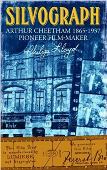 A biography has been published of the first filmmaker from Wales, Arthur Cheetham. Philip Lloyd's Silvograph: Arthur Cheetham 1865-1937, Pioneer Film-maker tells the story of the Welsh pioneer who just twelve months after the Lumières' Paris film-show of December 1895 was screening films to audiences in Wales, and who started to produce his own films as early as January 1898. A specialist in local actualities, and one of the first people to film football, the indefatigable Cheetham took film to many communities across Wales, moving on to run cinemas in Wales and the Manchester area. The book, which shares the name Cheetham gave to his film shows, brings together biography and filmography, and is published by Carreg Gwalch (in English).
A biography has been published of the first filmmaker from Wales, Arthur Cheetham. Philip Lloyd's Silvograph: Arthur Cheetham 1865-1937, Pioneer Film-maker tells the story of the Welsh pioneer who just twelve months after the Lumières' Paris film-show of December 1895 was screening films to audiences in Wales, and who started to produce his own films as early as January 1898. A specialist in local actualities, and one of the first people to film football, the indefatigable Cheetham took film to many communities across Wales, moving on to run cinemas in Wales and the Manchester area. The book, which shares the name Cheetham gave to his film shows, brings together biography and filmography, and is published by Carreg Gwalch (in English).
2018
Something Good (December 2018)
 A recently-discovered 1898 film of a black couple kissing, Something Good - Negro Kiss, has been inducted into the National Film Registry by the Library of Congress as one of 25 films selected this year as one of 25 films for their importance in American culture. The film, discovered by archivist Dino Everett of the University of Southern California, was made by William Selig and features the minstrel performers Saint Suttle and Gertie Brown. Happily free of any racial carcicaturing, the film is available online. The story of its discovery and identification is given by Jasmine Weber is 'A Kiss in a 1898 Silent Film Is the Earliest Cinematic Depiction of Black Love', a piece on the Hyperallergic site.
A recently-discovered 1898 film of a black couple kissing, Something Good - Negro Kiss, has been inducted into the National Film Registry by the Library of Congress as one of 25 films selected this year as one of 25 films for their importance in American culture. The film, discovered by archivist Dino Everett of the University of Southern California, was made by William Selig and features the minstrel performers Saint Suttle and Gertie Brown. Happily free of any racial carcicaturing, the film is available online. The story of its discovery and identification is given by Jasmine Weber is 'A Kiss in a 1898 Silent Film Is the Earliest Cinematic Depiction of Black Love', a piece on the Hyperallergic site.
The Great Victorian Moving Picture Show (October 2018)
 The London Film Festival's Archive Gala show, on 18 October 2018, was The Great Victorian Moving Picture Show. This was a compilation of digital restorations of large-format Victorian films, chiefly the 68mm films of the British Mutoscope and Biograph Company, which have been seen before in 35mm form but never at their full image resolution since the late Victorian era (the company ceased 68mm production in 1903). There were also some digital restorations of 60mm films by Prestwich and Gaumont. The films, most of which were made by W.K-L. Dickson, were introduced by the British Film Institute's silent film curator Bryony Dixon, and were accompanied by a small band led by John Sweeney. Fifty-one films were shown, and are a part of a major restoration of the BFI's entire Victorian era film collection - some 700 films - being planned for 2019 and the two hundreth anniversary of the birth of Queen Victoria.
The London Film Festival's Archive Gala show, on 18 October 2018, was The Great Victorian Moving Picture Show. This was a compilation of digital restorations of large-format Victorian films, chiefly the 68mm films of the British Mutoscope and Biograph Company, which have been seen before in 35mm form but never at their full image resolution since the late Victorian era (the company ceased 68mm production in 1903). There were also some digital restorations of 60mm films by Prestwich and Gaumont. The films, most of which were made by W.K-L. Dickson, were introduced by the British Film Institute's silent film curator Bryony Dixon, and were accompanied by a small band led by John Sweeney. Fifty-one films were shown, and are a part of a major restoration of the BFI's entire Victorian era film collection - some 700 films - being planned for 2019 and the two hundreth anniversary of the birth of Queen Victoria.
Goodbye to the nineteenth century (April 2018)
 The last person to have been born in the nineteenth century has died. Nabi Tajima of Japan was 117 years and 280 days old when she died in the town of Kikai on 21 April 2018. Shw was born on 4 August 1900 (the nineenth century of course only ended at the end of December 1900). Tajima had nine children and a reported 160 descendants, including great-great-great grandchildren. There is a report on her passing on the Associated Press site. The oldest person in the world is now another Japanese woman, Chiyo Miyako. She will be 117 on 2 May 2018, meaning that she was born in the twentieth century.
The last person to have been born in the nineteenth century has died. Nabi Tajima of Japan was 117 years and 280 days old when she died in the town of Kikai on 21 April 2018. Shw was born on 4 August 1900 (the nineenth century of course only ended at the end of December 1900). Tajima had nine children and a reported 160 descendants, including great-great-great grandchildren. There is a report on her passing on the Associated Press site. The oldest person in the world is now another Japanese woman, Chiyo Miyako. She will be 117 on 2 May 2018, meaning that she was born in the twentieth century.
Donisthorpe, revised (February 2018)
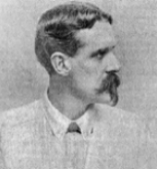 Stephen Herbert, co-editor of this site, has brought out a second edition of his acclaimed historical biography of Wordsworth Donisthorpe: anarchist, industrialist, chess player, creator of his own language, and inventor, who as early as 1876 applied for a patent relating to motion pictures. The book, Industry, Liberty and a Vision: Wordsworth Donisthorpe's Kinesigraph was originally published as a paperback by The Projection Box in 1993. The second edition is in hardback and expands greatly on the original research. A limited number of copies has been produced by The Projection Box. Anyone interested in purchasing a copy (£30 plus postage and packing) should contact Herbert at s-herbert@easynet.co.uk.
Stephen Herbert, co-editor of this site, has brought out a second edition of his acclaimed historical biography of Wordsworth Donisthorpe: anarchist, industrialist, chess player, creator of his own language, and inventor, who as early as 1876 applied for a patent relating to motion pictures. The book, Industry, Liberty and a Vision: Wordsworth Donisthorpe's Kinesigraph was originally published as a paperback by The Projection Box in 1993. The second edition is in hardback and expands greatly on the original research. A limited number of copies has been produced by The Projection Box. Anyone interested in purchasing a copy (£30 plus postage and packing) should contact Herbert at s-herbert@easynet.co.uk.
Georgiades and Tragidis (February 2018)
 One of the founding legends of the birth of cinema in the UK is the role of two mysterious Greek businessmen, Georgiades and Tragidis, who in 1894 introduced the engineer Robert Paul to motion pictures when they asked him to make copies of the Kinetoscope, which had not been patented in Europe. Much more has been found out about the Greeks by research carried out (independent of each other) by the British early film and music hall historian Barry Anthony and Greek film historian Theodoros Natsinas. We now know that what were thought to be two individuals were four or five: Demetrius Anastas Georgiades, George John Tragidis, George Georgiades, Theo Tragidis, with their colleague George Malamakis, and that their activities and acivities were widespread. This new information refreshes and enriches our knowledge of early British (and Greek) film history, and has led to a rewrite of this site's entry for the two (or four, or five) men.
One of the founding legends of the birth of cinema in the UK is the role of two mysterious Greek businessmen, Georgiades and Tragidis, who in 1894 introduced the engineer Robert Paul to motion pictures when they asked him to make copies of the Kinetoscope, which had not been patented in Europe. Much more has been found out about the Greeks by research carried out (independent of each other) by the British early film and music hall historian Barry Anthony and Greek film historian Theodoros Natsinas. We now know that what were thought to be two individuals were four or five: Demetrius Anastas Georgiades, George John Tragidis, George Georgiades, Theo Tragidis, with their colleague George Malamakis, and that their activities and acivities were widespread. This new information refreshes and enriches our knowledge of early British (and Greek) film history, and has led to a rewrite of this site's entry for the two (or four, or five) men.
Mervyn Heard (January 2018)
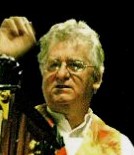 It is very sad to have to report the death of Mervyn Heard on 14 November 2017. He was the UK's leading practitioner of the magic lantern, having given hundreds of performance to general and specialist audiences alike over many years, which did so much to keep alive the art and entertainment value of the lantern. He was also a scholar of the medium, whose doctoral thesis was subsequently published as Phantasmagoria: the Secret Life of the Magic Lantern in 2006. He was a contributor to the original Who's Who of Victorian Cinema. contributing pieces on George Green, Sophie Hancock and Randall Williams, all of which can be found in this site. He will be greatly missed.
It is very sad to have to report the death of Mervyn Heard on 14 November 2017. He was the UK's leading practitioner of the magic lantern, having given hundreds of performance to general and specialist audiences alike over many years, which did so much to keep alive the art and entertainment value of the lantern. He was also a scholar of the medium, whose doctoral thesis was subsequently published as Phantasmagoria: the Secret Life of the Magic Lantern in 2006. He was a contributor to the original Who's Who of Victorian Cinema. contributing pieces on George Green, Sophie Hancock and Randall Williams, all of which can be found in this site. He will be greatly missed.
2017
The Kinetoscope (October 2017)
 The most important book about early cinema - or rather, early motion pictures - to be published recently, is The Kinetoscope: A British History, by Richard Brown and Barry Anthony, with a chapter by Michael Harvey about the surviving machines, and an introduction by Charles Musser. Based heavily on extensive original research, this account describes and explains the complex commercial aspects, the patent and copyright situation, the nature of the films, and the people behind the Kinetoscope's exploitation (including many little-known names), with a re-examination of the contentious Robert Paul/Birt Acres story. Five appendices, including a list of Kinetoscope exhibitions in Britain, conclude this invaluable account of the peepshow (imported Edison orginals and local copies) that was central to the origins of the film industry. The Kinetoscope: A British History is published by John Libbey.
The most important book about early cinema - or rather, early motion pictures - to be published recently, is The Kinetoscope: A British History, by Richard Brown and Barry Anthony, with a chapter by Michael Harvey about the surviving machines, and an introduction by Charles Musser. Based heavily on extensive original research, this account describes and explains the complex commercial aspects, the patent and copyright situation, the nature of the films, and the people behind the Kinetoscope's exploitation (including many little-known names), with a re-examination of the contentious Robert Paul/Birt Acres story. Five appendices, including a list of Kinetoscope exhibitions in Britain, conclude this invaluable account of the peepshow (imported Edison orginals and local copies) that was central to the origins of the film industry. The Kinetoscope: A British History is published by John Libbey.
Muybridge DNA (July 2017)
 Scientists at Harvard Medical School have managed to encloded an 1878 photographic sequence of horse galloping by Eadweard Muybridge in the DNA of a living cell. The news reporting, such as the New York Times account, has inevitably - but quite incorrectly - called it the first motion picture film to be encoded in this way. Muybridge's photographic sequence was not a film, but can be animated to appear as though it was one (the Harvard experiment in fact only uses five frames). The feat is one further step in demonstrating the potential for living DNA to be employed as a storage device, with mind-boggling implications. It is also a vivid illustration of the iconic nature of Muybridge's art that it should be selected for such a demonstration.
Scientists at Harvard Medical School have managed to encloded an 1878 photographic sequence of horse galloping by Eadweard Muybridge in the DNA of a living cell. The news reporting, such as the New York Times account, has inevitably - but quite incorrectly - called it the first motion picture film to be encoded in this way. Muybridge's photographic sequence was not a film, but can be animated to appear as though it was one (the Harvard experiment in fact only uses five frames). The feat is one further step in demonstrating the potential for living DNA to be employed as a storage device, with mind-boggling implications. It is also a vivid illustration of the iconic nature of Muybridge's art that it should be selected for such a demonstration.
Emma Morano (April 2017)
 The last person known to have been born in the 1800s has died. Emma Morano, of Verbania in Italy, died on 15 April 2017 aged 117. She was born in November 1899, when Queen Victoria was still on the throne, and lived through two world wars, eleven popes and ninety-three Italian governments. She was made a Knight of Order of Merit of the Italian Republic in 2011. She is not the last person from the Victorian age, however. The oldest person now living is believed to be the Jamaican Violet Brown, who was born on 10 March 1900. Victoria died in January 1901. There is a news report on Emma Morano's death on the BBC News website, and naturally she lives on through her own Wikipedia page.
The last person known to have been born in the 1800s has died. Emma Morano, of Verbania in Italy, died on 15 April 2017 aged 117. She was born in November 1899, when Queen Victoria was still on the throne, and lived through two world wars, eleven popes and ninety-three Italian governments. She was made a Knight of Order of Merit of the Italian Republic in 2011. She is not the last person from the Victorian age, however. The oldest person now living is believed to be the Jamaican Violet Brown, who was born on 10 March 1900. Victoria died in January 1901. There is a news report on Emma Morano's death on the BBC News website, and naturally she lives on through her own Wikipedia page.
2016
Friese-Greene Ale (December 2016)
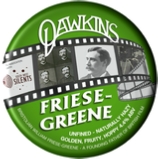 In what must surely be a first for a Victorian cinema figure, William Friese Greene has had an ale name after him. The British early film experimenter, born in Bristol in 1855, has been honoured by West Country brewers Dawkins, who have created Friese-Greene Ale, on behalf of local silent film advocates and programmers, South West Silents. Launched in September of this year, Friese-Greene Ale is described as "Golden, fruity and hoppy. A deliciously refreshing brew, unfined for yet more flavour from the suitably pioneering Rakau hops", and said to go best with roast chicken, grilled fish and salads. There is more information on Friese-Greene Ale and the man himself on the South West Silents site. (December 2016)
In what must surely be a first for a Victorian cinema figure, William Friese Greene has had an ale name after him. The British early film experimenter, born in Bristol in 1855, has been honoured by West Country brewers Dawkins, who have created Friese-Greene Ale, on behalf of local silent film advocates and programmers, South West Silents. Launched in September of this year, Friese-Greene Ale is described as "Golden, fruity and hoppy. A deliciously refreshing brew, unfined for yet more flavour from the suitably pioneering Rakau hops", and said to go best with roast chicken, grilled fish and salads. There is more information on Friese-Greene Ale and the man himself on the South West Silents site. (December 2016)
J. Stuart Blackton, buccaneer (September 2016)
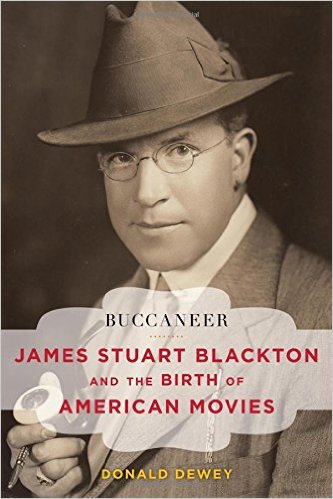 A new biography has been produced of J. Stuart Blackton. Donald Dewey's Buccaneer: James Stuart Blackton and the Birth of American Movies is published by Rowman & Littlefield Publishers. It tells the story of the British-born cartoonist and conjurer who went on to become one of the first film moguls in America, through the Vitagraph Company of America, which he founded with his fellow Briton Albert Smith. Aimed at a more general audience han the usual early cinema history book, the publicity blurb states: "As much of a seminal figure to the film industry as Thomas Edison and D.W. Griffith, James Stuart Blackton nonetheless remains unknown to most film enthusiasts and even many cinema scholars" and promises to recount the "drama, intrigue, and romance of this motion picture trailblazer".
A new biography has been produced of J. Stuart Blackton. Donald Dewey's Buccaneer: James Stuart Blackton and the Birth of American Movies is published by Rowman & Littlefield Publishers. It tells the story of the British-born cartoonist and conjurer who went on to become one of the first film moguls in America, through the Vitagraph Company of America, which he founded with his fellow Briton Albert Smith. Aimed at a more general audience han the usual early cinema history book, the publicity blurb states: "As much of a seminal figure to the film industry as Thomas Edison and D.W. Griffith, James Stuart Blackton nonetheless remains unknown to most film enthusiasts and even many cinema scholars" and promises to recount the "drama, intrigue, and romance of this motion picture trailblazer".
Glentoran v Cliftonville (June 2016)
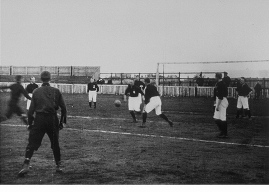 The world's first football film is known to have been shot by the Lumière operator Alexandre Promio in 1897. Entitled Football it appears in the Lumière catalogue among films shot by Promio in London in 1897, and has long been assumed to show London-based teams playing. However, the investigations of an Irish football enthusiast, Sam Robinson, have demonstrated conclusively that the two teams featured are the Northern Ireland teams Glentoran and Cliftonville, the latter distinguishable by distinctive white shamrock design on their shirts. Notices in the Irish press report that a film showing Glentoran playing Cliftonville on 23 October 1897 was shown in Belfast on 25 October as part of a programme showing the new Lumière Triograph projector. Further investigations suggest that the operator was not Promio, but may have been the British impresario George Francis. More needs to be found out about the film, but it is certain that it was not filmed in London, that indeed there was no 1897 football film made in London, and that some parts of the Lumière catalogue clearly need to be treated with caution by historians.
The world's first football film is known to have been shot by the Lumière operator Alexandre Promio in 1897. Entitled Football it appears in the Lumière catalogue among films shot by Promio in London in 1897, and has long been assumed to show London-based teams playing. However, the investigations of an Irish football enthusiast, Sam Robinson, have demonstrated conclusively that the two teams featured are the Northern Ireland teams Glentoran and Cliftonville, the latter distinguishable by distinctive white shamrock design on their shirts. Notices in the Irish press report that a film showing Glentoran playing Cliftonville on 23 October 1897 was shown in Belfast on 25 October as part of a programme showing the new Lumière Triograph projector. Further investigations suggest that the operator was not Promio, but may have been the British impresario George Francis. More needs to be found out about the film, but it is certain that it was not filmed in London, that indeed there was no 1897 football film made in London, and that some parts of the Lumière catalogue clearly need to be treated with caution by historians.
Susannah Mushatt Jones (May 2016)
 The death has been reported of Susannah Mushatt Jones, who was the oldest living person in the world and the last living American born in the 19th Century. She was the granddaughter of slaves and her parents were sharecroppers. She was born in Alabama in July 1899, just over four years after the first exhibition of projected film in America. She lived through twenty presidencies, working as a nanny in New York
and helping to establish a scholarship fund for young African-American women. The oldest living person is now believed to be 116-year old Emma Morano, who lives in Italy and who was born in November 1899. There is a report on Susannah Mushatt Jones on the BBC news website.
The death has been reported of Susannah Mushatt Jones, who was the oldest living person in the world and the last living American born in the 19th Century. She was the granddaughter of slaves and her parents were sharecroppers. She was born in Alabama in July 1899, just over four years after the first exhibition of projected film in America. She lived through twenty presidencies, working as a nanny in New York
and helping to establish a scholarship fund for young African-American women. The oldest living person is now believed to be 116-year old Emma Morano, who lives in Italy and who was born in November 1899. There is a report on Susannah Mushatt Jones on the BBC news website.
Catalogue Lumière (November 2015)
 Hot on the heels of the release of Lumière films on DVD comes news of Catalogue Lumière, a complete catalogue of their company's production 1895-1905 covering all 1,428 titles. The catalogue is an independent initiative by data developer Manuel Schmalstieg, based on the 1996 book La production cinématographique des Frères Lumière, edited by Michelle Aubert and Jean-Claude Seguin. The site provides an individual web page for every film, and has hyperlinks for all of the credit and location information, making it possible browse production by operator, country or town. The site also has a frame still for almost every extant film (18 Lumière films are considered lost). The data is also available in downloadable form, a highly welcome innovation.
Hot on the heels of the release of Lumière films on DVD comes news of Catalogue Lumière, a complete catalogue of their company's production 1895-1905 covering all 1,428 titles. The catalogue is an independent initiative by data developer Manuel Schmalstieg, based on the 1996 book La production cinématographique des Frères Lumière, edited by Michelle Aubert and Jean-Claude Seguin. The site provides an individual web page for every film, and has hyperlinks for all of the credit and location information, making it possible browse production by operator, country or town. The site also has a frame still for almost every extant film (18 Lumière films are considered lost). The data is also available in downloadable form, a highly welcome innovation.
Lumière comes to DVD and Blu-Ray (November 2015)
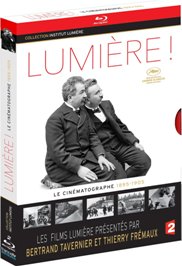 At long last, a substantial collection of films made by the Lumière brothers has been released on DVD and Blu-Ray. Lumière! presents 114 of the 1,400 or so Lumière films in existence, marking the 120th anniversary of the public commercial debut of the Lumière Cinématographe on 28 December 1895. Taken from recent 4K restorations overseen by the Institut Lumière, the films look outstandingly sharp, and will startle anyone used to the worn dupes that have been in circulation for decades. The 2-disc set (region 2) has been released in France by France Télévisions Distribution and a trailer can be found on Amazon.fr. There is an introduction by Bertrand Tavernier, French commentary by Thierry Frémaux, music by Camille Saint-Saëns and a 44-page booklet.
At long last, a substantial collection of films made by the Lumière brothers has been released on DVD and Blu-Ray. Lumière! presents 114 of the 1,400 or so Lumière films in existence, marking the 120th anniversary of the public commercial debut of the Lumière Cinématographe on 28 December 1895. Taken from recent 4K restorations overseen by the Institut Lumière, the films look outstandingly sharp, and will startle anyone used to the worn dupes that have been in circulation for decades. The 2-disc set (region 2) has been released in France by France Télévisions Distribution and a trailer can be found on Amazon.fr. There is an introduction by Bertrand Tavernier, French commentary by Thierry Frémaux, music by Camille Saint-Saëns and a 44-page booklet.
The First Film (May 2015)
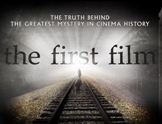 The First Film is a documentary investigation by David Nicholas Wilkinson which argues the case for Louis Aimé Augustin Le Prince to be recognised as the invetore of motion pictures, ahead of Edison or the Lumière brothers. Wilkinson's 'journey' takes him to Leeds (where Le Prince took his motion pictures in 1888/89), Hollywood, New York, Paris and Cannes. He interviews many early cinema technology authorities (including Stephen Herbert, co-editor of this website). It is a story that has fascinated others before, notably Christopher Rawlence, who produced the book and television programme The Missing Reel in 1990, and hopefully it will go some way to widen knowledge and appreciation of his great achievements. The film will receive its world premiere at the Edinburgh International Film Festival on 23 June, and will be available in UK cinemas from 3 July.
The First Film is a documentary investigation by David Nicholas Wilkinson which argues the case for Louis Aimé Augustin Le Prince to be recognised as the invetore of motion pictures, ahead of Edison or the Lumière brothers. Wilkinson's 'journey' takes him to Leeds (where Le Prince took his motion pictures in 1888/89), Hollywood, New York, Paris and Cannes. He interviews many early cinema technology authorities (including Stephen Herbert, co-editor of this website). It is a story that has fascinated others before, notably Christopher Rawlence, who produced the book and television programme The Missing Reel in 1990, and hopefully it will go some way to widen knowledge and appreciation of his great achievements. The film will receive its world premiere at the Edinburgh International Film Festival on 23 June, and will be available in UK cinemas from 3 July.
Oxford DNB (May 2015)
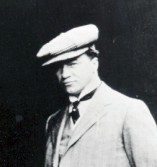 The last online release from the Oxford Dictionary of National Biography includes many names from British cinema history. Among these is Albert E. Smith (1874–1958), the son of a market gardener from Faversham, Kent, who journeyed with his family to America in the 1880s, took up magic tricks as a profession, then became involved in film production and exhibition with his fellow Englishman J. Stuart Blackton with whom he founded Vitgraph, which went on to become America's leading film company before the First World War. Other Victorian cinema names to be found on the ONDB include Birt Acres, G.A. Smith, Charles Urban, J. Stuart Blackton, William Friese Greene and Cecil Hepworth. The ODNB is a subscription-based site and is available for free at many libraries in the UK.
The last online release from the Oxford Dictionary of National Biography includes many names from British cinema history. Among these is Albert E. Smith (1874–1958), the son of a market gardener from Faversham, Kent, who journeyed with his family to America in the 1880s, took up magic tricks as a profession, then became involved in film production and exhibition with his fellow Englishman J. Stuart Blackton with whom he founded Vitgraph, which went on to become America's leading film company before the First World War. Other Victorian cinema names to be found on the ONDB include Birt Acres, G.A. Smith, Charles Urban, J. Stuart Blackton, William Friese Greene and Cecil Hepworth. The ODNB is a subscription-based site and is available for free at many libraries in the UK.
Chikly at Bologna (May 2015)
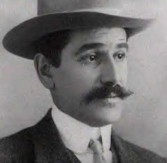 This year's Il Cinema Ritrovato festival of archival and restored films, at Bologna in Italy, will have a short section devoted to the Tunisian film pioneer Albert Samama Chikly. He introduced films to Tunisia in 1897, and continued as a filmmaker and photographer through to the 1920s, including filming with the French army at Verdun in 1915 and producing the First Tunisian fiction film, Zohra, in 1922. There is increasing interest in this enterprising man-of-all-trades, who was made the subject of a documentary film in 1996, and a biography by Guillemette Mansour in 2000. The Bologna website describes him as a "forgotten pioneer of Tunisian cinema, war photographer, inventor, nomad and brilliant commentator of a changing society".
This year's Il Cinema Ritrovato festival of archival and restored films, at Bologna in Italy, will have a short section devoted to the Tunisian film pioneer Albert Samama Chikly. He introduced films to Tunisia in 1897, and continued as a filmmaker and photographer through to the 1920s, including filming with the French army at Verdun in 1915 and producing the First Tunisian fiction film, Zohra, in 1922. There is increasing interest in this enterprising man-of-all-trades, who was made the subject of a documentary film in 1996, and a biography by Guillemette Mansour in 2000. The Bologna website describes him as a "forgotten pioneer of Tunisian cinema, war photographer, inventor, nomad and brilliant commentator of a changing society".
Regent Street Cinema (May 2015)
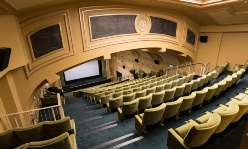 London's newest cinema is also its oldest. The Regent Street Cinema, which opened in May 2015 after a £6.1m restoration project, is on the site of the Marlborough Hall of the Polytechnic Institution on London's Regent Street, where the Lumière brothers' Cinématographe was first exhibited to the British public on 20 February 1896 (20 February was the press show; from 21 February onwards the show was available to paying audiences). The Lumières weren't at this first commercial screening of projected film in Britain; the films were presented by their friend Félicien Trewey. The films known to have been shown were Street Scene, Blacksmith, Partie d'ecarte/Card Party, Photographic Congress Leaving Boat, Fishing for Goldfish, Bathers in Ocean, Prize Fighters, Cowboy, Workers Leaving Factory, Baby's Breakfast, Train Entering Station and Le Serpent/Trewey's Calico Strip. It will now operate as an art-house cinema.
London's newest cinema is also its oldest. The Regent Street Cinema, which opened in May 2015 after a £6.1m restoration project, is on the site of the Marlborough Hall of the Polytechnic Institution on London's Regent Street, where the Lumière brothers' Cinématographe was first exhibited to the British public on 20 February 1896 (20 February was the press show; from 21 February onwards the show was available to paying audiences). The Lumières weren't at this first commercial screening of projected film in Britain; the films were presented by their friend Félicien Trewey. The films known to have been shown were Street Scene, Blacksmith, Partie d'ecarte/Card Party, Photographic Congress Leaving Boat, Fishing for Goldfish, Bathers in Ocean, Prize Fighters, Cowboy, Workers Leaving Factory, Baby's Breakfast, Train Entering Station and Le Serpent/Trewey's Calico Strip. It will now operate as an art-house cinema.
Eadweard (April 2015)
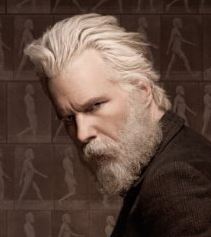 Eadweard is a feature film based on the life of the chronophotographer Eadweard Muybridge. The Canadian-produced film is directed by Kyle Rideout and stars Michael Eklund as Eadweard Muybridge, Sara Canning as Flora Muybridge and Charlie Carrick as Harry Larkyns. Described as 'pyschological drama', it focusses on Muybridge's murder of his wife Flora's lover, Larkyns, for which Muybridge was famously acquitted with a verdict of justifiable homicide. Other historical figures featured include Thomas Edison, Leland Stanford (who funded some of Muybridge's work) and the artist Thomas Eakins. The film premiered at the Berlin International Film Festival on 6 February 2015. It would appear that Andy Serkis's long-planned rival Muybridge biopic (Freezing Time) is unlikely to get made.
Eadweard is a feature film based on the life of the chronophotographer Eadweard Muybridge. The Canadian-produced film is directed by Kyle Rideout and stars Michael Eklund as Eadweard Muybridge, Sara Canning as Flora Muybridge and Charlie Carrick as Harry Larkyns. Described as 'pyschological drama', it focusses on Muybridge's murder of his wife Flora's lover, Larkyns, for which Muybridge was famously acquitted with a verdict of justifiable homicide. Other historical figures featured include Thomas Edison, Leland Stanford (who funded some of Muybridge's work) and the artist Thomas Eakins. The film premiered at the Berlin International Film Festival on 6 February 2015. It would appear that Andy Serkis's long-planned rival Muybridge biopic (Freezing Time) is unlikely to get made.
The last British Victorian (January 2015)
 Ethel Lang, who died 14 January 2015, aged 114, was the last Briton left who had been born in the reign of Queen Victoria. The Yorkshire woman, born Ethel Lancaster, was born 27 May 1900, when Queen Victoria was still on the throne (Victoria died in January 1901). She left school aged thirteen to work in a shirt factory, married William Lang in 1922 and had a single daughter, Margaret, who is still living aged 91. Ethel Lang lived all her life in Barnsley in Yorkshire. The oldest living person at present is believed to be Misao Okawa of Japan, who was 116 in March 2014.
Ethel Lang, who died 14 January 2015, aged 114, was the last Briton left who had been born in the reign of Queen Victoria. The Yorkshire woman, born Ethel Lancaster, was born 27 May 1900, when Queen Victoria was still on the throne (Victoria died in January 1901). She left school aged thirteen to work in a shirt factory, married William Lang in 1922 and had a single daughter, Margaret, who is still living aged 91. Ethel Lang lived all her life in Barnsley in Yorkshire. The oldest living person at present is believed to be Misao Okawa of Japan, who was 116 in March 2014.
Louis Lumière at 150 (October 2014)
 October 5th, 2014 was the 150th birthday of Louis Lumière, co-inventor with his older brother Auguste of the Cinématographe, which ushered in cinema as we know it. The first public exhibition given by the brothers' camera-projector was in Paris, before the Société d'Encouragement de l'Industrie Nationale, on 22 March 1895. This was followed by several more presentations in France throughout that year, culminating in their famous first show to a paying audience at the Salon Indien, Grand Café, 14 boulevard des Capucines, Paris. Louis, who originally worked at his father's photographic plate business, was also a pioneer of colour photography, widescreen cinema, and stereoscopy (3D) for images and films.
October 5th, 2014 was the 150th birthday of Louis Lumière, co-inventor with his older brother Auguste of the Cinématographe, which ushered in cinema as we know it. The first public exhibition given by the brothers' camera-projector was in Paris, before the Société d'Encouragement de l'Industrie Nationale, on 22 March 1895. This was followed by several more presentations in France throughout that year, culminating in their famous first show to a paying audience at the Salon Indien, Grand Café, 14 boulevard des Capucines, Paris. Louis, who originally worked at his father's photographic plate business, was also a pioneer of colour photography, widescreen cinema, and stereoscopy (3D) for images and films.
Charles Urban book award (May 2014)
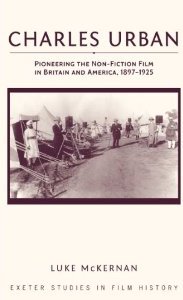 Luke McKernan's book Charles Urban: Pioneering the Non-fiction Film in Britain and America, 1897-1925 has been awarded the Krasna-Krausz Moving Image Book Award for 2014. The book tells the history behind the Anglo-American film producer Charles Urban who first entered the film industry in 1895 as the manager of a Kinetoscope and phonograph parlour in Detroit, moved to Britain to become manager of the Warwick Trading Company in 1898, and went on to enjoy an influential career as a producer of documentary and educational films, making his greatest mark with the colour film process Kinemacolor. Luke McKernan is co-editor of Who's Who of Victorian Cinema.
Luke McKernan's book Charles Urban: Pioneering the Non-fiction Film in Britain and America, 1897-1925 has been awarded the Krasna-Krausz Moving Image Book Award for 2014. The book tells the history behind the Anglo-American film producer Charles Urban who first entered the film industry in 1895 as the manager of a Kinetoscope and phonograph parlour in Detroit, moved to Britain to become manager of the Warwick Trading Company in 1898, and went on to enjoy an influential career as a producer of documentary and educational films, making his greatest mark with the colour film process Kinemacolor. Luke McKernan is co-editor of Who's Who of Victorian Cinema.
Muy Blog selection (March 2014)
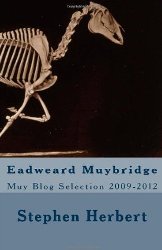 Eadweard Muybridge: Muy Blog Selection 2009-2012 is the latest publication from Stephen Herbert, co-editor of Who's Who of Victorian Cinema. It is a selection of posts from his Eadweard Muybridge blog Muy Blog. It documents four years of news, research and comment on Muybridge through thirty-eight posts, with many illustrations. As blurb for the book has it, "Find out what connects Ronald Reagan, Muybridge, and Death Valley. Enjoy the zoöpraxographer’s influence on the cartoonists of the late 19th century. Follow the author as he goes 'In search of Helios'. Was Eadweard Muybridge really ‘The Father of the Motion Picture’?" The book has been published by The Projection Box.
Eadweard Muybridge: Muy Blog Selection 2009-2012 is the latest publication from Stephen Herbert, co-editor of Who's Who of Victorian Cinema. It is a selection of posts from his Eadweard Muybridge blog Muy Blog. It documents four years of news, research and comment on Muybridge through thirty-eight posts, with many illustrations. As blurb for the book has it, "Find out what connects Ronald Reagan, Muybridge, and Death Valley. Enjoy the zoöpraxographer’s influence on the cartoonists of the late 19th century. Follow the author as he goes 'In search of Helios'. Was Eadweard Muybridge really ‘The Father of the Motion Picture’?" The book has been published by The Projection Box.
Dessert at Dan Leno's House (March 2014)
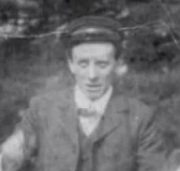 We have only just learned of the discovery, announced in September 2013, of a Mutoscope flick-card reel taken from a 1902 British Mutoscope and Biograph film of Dan Leno. Entitled Dessert at Dan Leno's House the film shows the great British comedian and his family enaging in tomfoolery around a table in an open air setting. The Mutoscope reel was disocvered by collector John Henty and has been restored onto digital video by Studio 1919. The Mutoscope reel was originally owned by members of Leno's family. It is the second Leno film to have been discovered, after An Obstinate Cork (1902) which survives in the form of a Kinora reel (a smaller flick-card mechanism). The newly-discovered film can be viewed on YouTube, with some background information on its discovery and provenance.
We have only just learned of the discovery, announced in September 2013, of a Mutoscope flick-card reel taken from a 1902 British Mutoscope and Biograph film of Dan Leno. Entitled Dessert at Dan Leno's House the film shows the great British comedian and his family enaging in tomfoolery around a table in an open air setting. The Mutoscope reel was disocvered by collector John Henty and has been restored onto digital video by Studio 1919. The Mutoscope reel was originally owned by members of Leno's family. It is the second Leno film to have been discovered, after An Obstinate Cork (1902) which survives in the form of a Kinora reel (a smaller flick-card mechanism). The newly-discovered film can be viewed on YouTube, with some background information on its discovery and provenance.
The last 19th century Briton (November 2013)
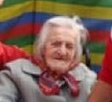 Grace Jones of Bermondsey, London died on 14 November 2013. She was 113 years old, Britain's oldest person and the last remaining Briton to have been born in the 1800s. She was born on 7 December 1899. She had never married, her fiancé having been killed in action in the First World War. She worked as a seamstress and for the British government during and after World War Two. The United Kingdom's oldest living person is now Ethel Lang, from Barnsley, who because she was born in May 1900 qualifies as a Victorian (Queen Victoria died in January 1901). There is more information on Grace Jones on the BBC News site and she merits her own Wikipedia page.
Grace Jones of Bermondsey, London died on 14 November 2013. She was 113 years old, Britain's oldest person and the last remaining Briton to have been born in the 1800s. She was born on 7 December 1899. She had never married, her fiancé having been killed in action in the First World War. She worked as a seamstress and for the British government during and after World War Two. The United Kingdom's oldest living person is now Ethel Lang, from Barnsley, who because she was born in May 1900 qualifies as a Victorian (Queen Victoria died in January 1901). There is more information on Grace Jones on the BBC News site and she merits her own Wikipedia page.
Early cinema at Pordenone (October 2013)
 This year's Giornate del Cinema Muto, the silent film festival held at Pordenone in Italy, featured two major surveys of Victorian cinema films. The strand Mexico: Records of Revolution showed some of the earliest films taken in Mexico, including those by Lumière agents Gabriel Veyre and Claude Fernand Bon Bernard in 1896, the Edison films of James White and Frederick Blechynden in 1897 and the films of Mexico's own Salvador Toscano Barragán. The other strand presented the surviving Joly-Normandin five-perforation films 1896-99, including film of Queen Victoria's Diamond Jubilee procession and the risqué Le Coucher de la Marie (1896) made by Eugène Pirou and Léar. Full details are available in the festival catalogue.
This year's Giornate del Cinema Muto, the silent film festival held at Pordenone in Italy, featured two major surveys of Victorian cinema films. The strand Mexico: Records of Revolution showed some of the earliest films taken in Mexico, including those by Lumière agents Gabriel Veyre and Claude Fernand Bon Bernard in 1896, the Edison films of James White and Frederick Blechynden in 1897 and the films of Mexico's own Salvador Toscano Barragán. The other strand presented the surviving Joly-Normandin five-perforation films 1896-99, including film of Queen Victoria's Diamond Jubilee procession and the risqué Le Coucher de la Marie (1896) made by Eugène Pirou and Léar. Full details are available in the festival catalogue.
BFI Player (October 2013)
 The British Film Institute has released its much-anticipated BFI Player. This is a video-on-demand service offering a mixture of free (60%) and paid-for (40%) content for PC and Mac users, with iPad and Android tablets to be catered for soon. The eclectic collection of films, interviews and festival previews includes a large number of Victorian and early Edwardian era films, mostly the complete BFI collection of Mitchell and Kenyon actualities of working class lives. Other films from our period, which are all available to view for free, include some phantom ride train films, and Walter Gibbons and Jack Smith in A Morning Wash (1900).
The British Film Institute has released its much-anticipated BFI Player. This is a video-on-demand service offering a mixture of free (60%) and paid-for (40%) content for PC and Mac users, with iPad and Android tablets to be catered for soon. The eclectic collection of films, interviews and festival previews includes a large number of Victorian and early Edwardian era films, mostly the complete BFI collection of Mitchell and Kenyon actualities of working class lives. Other films from our period, which are all available to view for free, include some phantom ride train films, and Walter Gibbons and Jack Smith in A Morning Wash (1900).
Picturegoing (September 2013)
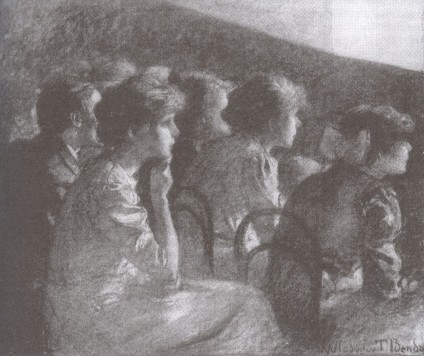 Picturegoing is a new website from Luke McKernan, co-editor of Who's Who of Victorian Cinema. The aim of the site is to document the experience of going to see pictures. It does so by reproducing eyewitness testimony of watching films worldwide, from the 1890s to the present day. The documents cited (or to be cited) include diaries, memoirs, essays, film trade papers, newspapers, works of fiction, poems, interviews, official reports, web texts, photographs, cartoons and artworks. The site will gather together as much testimony as it can from those who witnessed film in the 1890s, which will be mostly from newspaper reports, but some diaries, letters and memoirs also survive. The site is an ongoing project and will take some while to build up into a fully representative research resource.
Picturegoing is a new website from Luke McKernan, co-editor of Who's Who of Victorian Cinema. The aim of the site is to document the experience of going to see pictures. It does so by reproducing eyewitness testimony of watching films worldwide, from the 1890s to the present day. The documents cited (or to be cited) include diaries, memoirs, essays, film trade papers, newspapers, works of fiction, poems, interviews, official reports, web texts, photographs, cartoons and artworks. The site will gather together as much testimony as it can from those who witnessed film in the 1890s, which will be mostly from newspaper reports, but some diaries, letters and memoirs also survive. The site is an ongoing project and will take some while to build up into a fully representative research resource.
Charles Urban biography (July 2013)
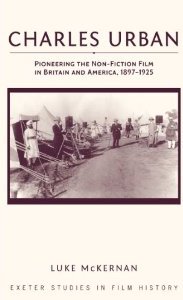 Next month University of Exeter Press is publishing Charles Urban: Pioneering the Non-Fiction Film in Britain and America, 1897-1925, by Luke McKernan, one of the co-editors of this website. Charles Urban was a leading figure in the development of the non-fiction film, renowned for his promotion of Kinemacolor, the world's first successful natural colour motion picture system, and was a passionate advocate of film as an educational force. He made a great contribution to Victorian cinema alone, starting in film in 1895 by exhibiting Kinetoscopes in Detroit, turning the Warwick Trading Company into the leading force in the British film business, and helping cinema spread rapidly across the world through the great popularity of the Bioscope projector. The book covers Urban's later period with the Charles Urban Trading Company, Kinemacolor, his involvement in WWI propaganda, and his post-war educational film ambitions.
Next month University of Exeter Press is publishing Charles Urban: Pioneering the Non-Fiction Film in Britain and America, 1897-1925, by Luke McKernan, one of the co-editors of this website. Charles Urban was a leading figure in the development of the non-fiction film, renowned for his promotion of Kinemacolor, the world's first successful natural colour motion picture system, and was a passionate advocate of film as an educational force. He made a great contribution to Victorian cinema alone, starting in film in 1895 by exhibiting Kinetoscopes in Detroit, turning the Warwick Trading Company into the leading force in the British film business, and helping cinema spread rapidly across the world through the great popularity of the Bioscope projector. The book covers Urban's later period with the Charles Urban Trading Company, Kinemacolor, his involvement in WWI propaganda, and his post-war educational film ambitions.
Muybridge special issue (March 2013)
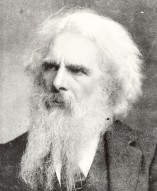 A special issue of Early Popular Visual Culture has been published, with Eadweard Muybridge as its theme (vol. 11, issue 1, February 2013). The guest editors are Stephen Herbert and Alexandra Reynolds. Produced in the aftermath of the great interest in Muybridge throughout 2010, the issue includes Deac Rossell, 'Chronophotography in the context of moving pictures'; Easter Leslie, 'Loops and joins: Muybridge and the optics of animation'; Marta Braun, 'Muybridge, authorship, originality'; Jonathan Shaw, 'Reflections on time, motion and photo mechanics'; Marek Pytel, 'Eadweard Muybridge: Inverted modernism and the stereoscopic vision'; and related book reviews.
A special issue of Early Popular Visual Culture has been published, with Eadweard Muybridge as its theme (vol. 11, issue 1, February 2013). The guest editors are Stephen Herbert and Alexandra Reynolds. Produced in the aftermath of the great interest in Muybridge throughout 2010, the issue includes Deac Rossell, 'Chronophotography in the context of moving pictures'; Easter Leslie, 'Loops and joins: Muybridge and the optics of animation'; Marta Braun, 'Muybridge, authorship, originality'; Jonathan Shaw, 'Reflections on time, motion and photo mechanics'; Marek Pytel, 'Eadweard Muybridge: Inverted modernism and the stereoscopic vision'; and related book reviews.
Leo Kamm portrait (January 2013)
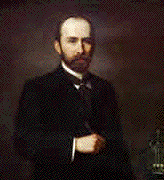 A large portrait in oils of the electrical engineer, motion picture inventor and manufacturer Leonard Kamm was recently donated by the Kamm family to the Bill Douglas Centre for the History of Cinema and Popular Culture, Exeter University. Leo Kamm’s ingenious amd technically successful Kammatograph, patented in 1898, for taking and projecting moving pictures on a glass disc, had some success as a novelty with potential, at the turn of the 20th century. The Bill Douglas Centre announced, “This oil painting is a great addition to our holdings, shedding light on an alternative course that cinema might have taken.” The painting was donated by the film pioneer's grandsons, Paul, Nick, Steve and Laurence Kamm.
A large portrait in oils of the electrical engineer, motion picture inventor and manufacturer Leonard Kamm was recently donated by the Kamm family to the Bill Douglas Centre for the History of Cinema and Popular Culture, Exeter University. Leo Kamm’s ingenious amd technically successful Kammatograph, patented in 1898, for taking and projecting moving pictures on a glass disc, had some success as a novelty with potential, at the turn of the 20th century. The Bill Douglas Centre announced, “This oil painting is a great addition to our holdings, shedding light on an alternative course that cinema might have taken.” The painting was donated by the film pioneer's grandsons, Paul, Nick, Steve and Laurence Kamm.
Corbett v Fitzsimmons joins National Film Registry (December 2012)
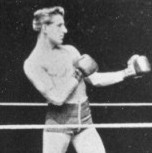 Every December the Librarian of Congress names twenty-five motion pictures that have been selected for inclusion in the National Film Registry of the Library of Congress. Such films are deemed to be cinematic treasures that represent important cultural, artistic and historic achievements in (American) filmmaking. This year one of the twenty-five is The Corbett-Fitzsimmons Fight (1897). The film documents the world heavyweight championship boxing match between James Corbett and Bob Fitzsimmons (the winner), filmed using a unique 63mm-wide format by Enoch Rector. The Library of Congress notes the great importance to early cinema history of boxing films, and the film's technical achievement. It doesn't point out that this is a rare example of a film submitted to the Registry which no longer survives in its complete form, as a substantial part of the 100mins film is lost (including the chaotic post-bout scenes).
Every December the Librarian of Congress names twenty-five motion pictures that have been selected for inclusion in the National Film Registry of the Library of Congress. Such films are deemed to be cinematic treasures that represent important cultural, artistic and historic achievements in (American) filmmaking. This year one of the twenty-five is The Corbett-Fitzsimmons Fight (1897). The film documents the world heavyweight championship boxing match between James Corbett and Bob Fitzsimmons (the winner), filmed using a unique 63mm-wide format by Enoch Rector. The Library of Congress notes the great importance to early cinema history of boxing films, and the film's technical achievement. It doesn't point out that this is a rare example of a film submitted to the Registry which no longer survives in its complete form, as a substantial part of the 100mins film is lost (including the chaotic post-bout scenes).
Andrée Lumière (December 2012)
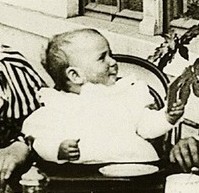 The newest entrant on Who's Who of Victorian Cinema is also the youngest. Andrée Lumière was the daughter of Auguste Lumière, co-inventor of the Cinématographe, and appeared in a number of Lumière films. Most famously, she is the baby in the renowned 1895 film Le Repas de bébé, in which she appears with Auguste and her mother Marguerite. Other films in which she features include Pêche aux poissons rouge (1895), Retour d'une promenade en mer (1896) and the most familiar of several train arrival films, L'arrivée d'un train en gare de La Ciotat (1897). Later she was a subject for Lumière Autochrome colour photographs. Sadly she died young, in 1918, a victim of the influenza epidemic. The new entry has been written by Stephen Herbert, and other new entries are in preparation.
The newest entrant on Who's Who of Victorian Cinema is also the youngest. Andrée Lumière was the daughter of Auguste Lumière, co-inventor of the Cinématographe, and appeared in a number of Lumière films. Most famously, she is the baby in the renowned 1895 film Le Repas de bébé, in which she appears with Auguste and her mother Marguerite. Other films in which she features include Pêche aux poissons rouge (1895), Retour d'une promenade en mer (1896) and the most familiar of several train arrival films, L'arrivée d'un train en gare de La Ciotat (1897). Later she was a subject for Lumière Autochrome colour photographs. Sadly she died young, in 1918, a victim of the influenza epidemic. The new entry has been written by Stephen Herbert, and other new entries are in preparation.
Who's Who of Victorian Cinema re-launched (November 2012)
 We are delighted to be able to announce that Who's Who of Victorian Cinema is being re-launched with a new look courtesy of web designers Bridget Designs. The site has been given a new colour scheme, much background code has been tidied up, navigation has been improved, and the site now works properly on all modern browers and widescreen PCs. We've also revisited many of the texts, adding new references, and in particular adding more illustrations so that a substantial percentage of those featured in Who's Who of Victorian Cinema are now identifiable through a photograph. We will continue to keep the site up-to-date, and we welcome any comments, corrections or additional material that will enable us to maintain what we hope is still a handy and reliable research resource.
We are delighted to be able to announce that Who's Who of Victorian Cinema is being re-launched with a new look courtesy of web designers Bridget Designs. The site has been given a new colour scheme, much background code has been tidied up, navigation has been improved, and the site now works properly on all modern browers and widescreen PCs. We've also revisited many of the texts, adding new references, and in particular adding more illustrations so that a substantial percentage of those featured in Who's Who of Victorian Cinema are now identifiable through a photograph. We will continue to keep the site up-to-date, and we welcome any comments, corrections or additional material that will enable us to maintain what we hope is still a handy and reliable research resource.
Phono-Cinéma-Théatre comes to life (October 2012)
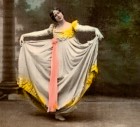 A restoration by the Cinémathèque Française, Gaumont-Pathé Archives and Lobster Films of the famed 1900 film show Phono-Cinéma-Théatre was the hit of the Giornate del Cinema Muto at Pordenone this month. The original film show featured at the Paris Exposition of 1900, and combined film in hand-painted colour with synchronised cylinder sounds and live music. The show was devised by Clément-Maurice and Henri Lioret and featured such stars of the French stage as Sarah Bernhardt (in the duel scene from Hamlet), Little Tich, Mariette Sully, Coquelin, Gabrielle Réjane and Cléo de Mérode. The restoration is enthusiastically reviewed by Neil Brand on the Silent London blog and by John Wyver on the Illuminations blog.
A restoration by the Cinémathèque Française, Gaumont-Pathé Archives and Lobster Films of the famed 1900 film show Phono-Cinéma-Théatre was the hit of the Giornate del Cinema Muto at Pordenone this month. The original film show featured at the Paris Exposition of 1900, and combined film in hand-painted colour with synchronised cylinder sounds and live music. The show was devised by Clément-Maurice and Henri Lioret and featured such stars of the French stage as Sarah Bernhardt (in the duel scene from Hamlet), Little Tich, Mariette Sully, Coquelin, Gabrielle Réjane and Cléo de Mérode. The restoration is enthusiastically reviewed by Neil Brand on the Silent London blog and by John Wyver on the Illuminations blog.
The world's first colour movie (September 2012)
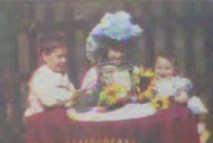 The National Media Museum in Bradford UK has announced the discovery of the world's earliest example of colour cinematography. The assorted colour tests were made by Edward R. Turner in 1902 using a three-colour camera that he developed with F. Marshall Lee. The work was funded by Charles Urban, and following Turner's death in 1903 Urban invited G.A. Smith to work on the system, the projector for which did not function properly. Smith solved the problem by removing one of the colour filters, an invention which led to the world's first successful natural colour system, Kinemacolor. There is a report on the BBC News site and a programme on the film, The Race for Colour will be broadcast on 17 September 2012 on BBC One South East and Yorkshire, and will be available UK-wise for seven days thereafter on iPlayer.
The National Media Museum in Bradford UK has announced the discovery of the world's earliest example of colour cinematography. The assorted colour tests were made by Edward R. Turner in 1902 using a three-colour camera that he developed with F. Marshall Lee. The work was funded by Charles Urban, and following Turner's death in 1903 Urban invited G.A. Smith to work on the system, the projector for which did not function properly. Smith solved the problem by removing one of the colour filters, an invention which led to the world's first successful natural colour system, Kinemacolor. There is a report on the BBC News site and a programme on the film, The Race for Colour will be broadcast on 17 September 2012 on BBC One South East and Yorkshire, and will be available UK-wise for seven days thereafter on iPlayer.
The Perfect Man (December 2011)
 David Waller's The Perfect Man: The Muscular Life and Times of Eugen Sandow, Victorian Strongman is the irst biography of strongman and bodybuilder Eugen Sandow since David Chaplman's Sandow the Magnificent of 1994. Sandow popularised bodybuilding, idealised physique and notions of healthy living and was one of the leading celebrities pof the late Victorian/Edwardian age. He was filmed on several occasions, being one of Edison's very first film subjects. The publicty blurb says of him: "Sandow deserves to be resurrected as a significant cultural figure whose life, like that of Oscar Wilde, tells us a great deal about sexuality and celebrity at the fin de siecle".
David Waller's The Perfect Man: The Muscular Life and Times of Eugen Sandow, Victorian Strongman is the irst biography of strongman and bodybuilder Eugen Sandow since David Chaplman's Sandow the Magnificent of 1994. Sandow popularised bodybuilding, idealised physique and notions of healthy living and was one of the leading celebrities pof the late Victorian/Edwardian age. He was filmed on several occasions, being one of Edison's very first film subjects. The publicty blurb says of him: "Sandow deserves to be resurrected as a significant cultural figure whose life, like that of Oscar Wilde, tells us a great deal about sexuality and celebrity at the fin de siecle".
The Soldier's Courtship found (July 2011)
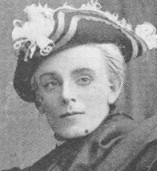 The Giornate del Cinema Muto, or Pordenone Silent Film Festival, has announced that a copy of the long-lost The Soldier's Courtship, probably the first British fiction film, has been found in the Centro Sperimentale di Cinematografia in Rome. The film was made by Robert Paul in April 1896 and was filmed onthe roof of the Alhambra Theatre, Leicester Square, where he was then exhibiting. The film starred Fred Storey (shown left), Julie Seale, and Paul's wife Ellen. Paul did produce a remake in 1897, on account of the film's huge popularity, but it is apparently the original that has been discovered. The film will be shown at Pordenone 1-8 October 2011.
The Giornate del Cinema Muto, or Pordenone Silent Film Festival, has announced that a copy of the long-lost The Soldier's Courtship, probably the first British fiction film, has been found in the Centro Sperimentale di Cinematografia in Rome. The film was made by Robert Paul in April 1896 and was filmed onthe roof of the Alhambra Theatre, Leicester Square, where he was then exhibiting. The film starred Fred Storey (shown left), Julie Seale, and Paul's wife Ellen. Paul did produce a remake in 1897, on account of the film's huge popularity, but it is apparently the original that has been discovered. The film will be shown at Pordenone 1-8 October 2011.
Méliès in colour (May 2011)
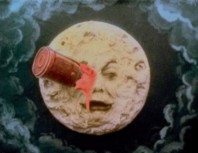 The Cannes film festival is the venue for the unveiling of the colour restoration of Georges Méliès' La voyage dans la lune (A Trip to the Moon) (1902). The unique hand-painted colour print was discovered in 1993 but originally considered to so deteriorated that it was beyond hope of restoration. But the print was acquired by Lobster Films of Paris, who were able to produce an internegative for some of the film and digitally photograph the individual frames of the remainder. It then took ten years until technology was able to manage the rest of the restoration process, which was undertaken in 2010 by the Technicolor Foundation. The restored film has a score by French band Air. A detailed history of Méliès, the film and its restoration is available in PDF format on the Technicolor website.
The Cannes film festival is the venue for the unveiling of the colour restoration of Georges Méliès' La voyage dans la lune (A Trip to the Moon) (1902). The unique hand-painted colour print was discovered in 1993 but originally considered to so deteriorated that it was beyond hope of restoration. But the print was acquired by Lobster Films of Paris, who were able to produce an internegative for some of the film and digitally photograph the individual frames of the remainder. It then took ten years until technology was able to manage the rest of the restoration process, which was undertaken in 2010 by the Technicolor Foundation. The restored film has a score by French band Air. A detailed history of Méliès, the film and its restoration is available in PDF format on the Technicolor website.
Tinayre in Madagascar (November 2010)
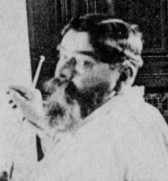 The latest entrant to Who's Who of Victorian Cinema is Louis Tinayre (1861-1942). Tinayre was a French artist who went to Madagascar in 1895 with the French army to record its quelling of an uprising. He became fascinating by the country and returned in 1898 to produce a giant panorama, at the same time taking a Lumière Cinématographe with film. His films of Madagascan people at work (ploughing fields, buildings walls and roads etc) were donated to the Cinémathèque française in 2009 and were featured at the Pordenone silent film festival in October 2010.
The latest entrant to Who's Who of Victorian Cinema is Louis Tinayre (1861-1942). Tinayre was a French artist who went to Madagascar in 1895 with the French army to record its quelling of an uprising. He became fascinating by the country and returned in 1898 to produce a giant panorama, at the same time taking a Lumière Cinématographe with film. His films of Madagascan people at work (ploughing fields, buildings walls and roads etc) were donated to the Cinémathèque française in 2009 and were featured at the Pordenone silent film festival in October 2010.
The year of Muybridge (May 2010)
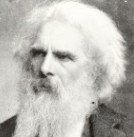 2010 is turning out to be the year of Eadweard Muybridge. A major exhibition, Helios: Eadweard Muybridge in a Time of Change is running in Washington until July, before moving to Tate Britain in London in September, and San Francisco in February 2011. A new biography by Marta Braun will be published in September. There are also two new websites from Kingston-on-Thames, the town where Muybridge was born and where he died. Eadweard Muybridge: Defining Modernities is an attempt at an definitive reference source from Kingston Museum, while Muybridge in Kingston brings together Muybridge collections, events and projects located in Kingston. Meanwhile Who's Who co-editor Stephen Herbert maintains the Compleat Muybridge site and maintains an active blog, Muy Blog.
2010 is turning out to be the year of Eadweard Muybridge. A major exhibition, Helios: Eadweard Muybridge in a Time of Change is running in Washington until July, before moving to Tate Britain in London in September, and San Francisco in February 2011. A new biography by Marta Braun will be published in September. There are also two new websites from Kingston-on-Thames, the town where Muybridge was born and where he died. Eadweard Muybridge: Defining Modernities is an attempt at an definitive reference source from Kingston Museum, while Muybridge in Kingston brings together Muybridge collections, events and projects located in Kingston. Meanwhile Who's Who co-editor Stephen Herbert maintains the Compleat Muybridge site and maintains an active blog, Muy Blog.
Patineur Grotesque (March 2010)
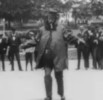 Australia's earliest surviving film was only discovered in 2005 and has just been screened again for the first time since 1896. The film is Patineur Grotesque (Humorous Rollerskater), filmed late October 1896 by French camera operator Marius Sestier, who was working for the Lumières. The film shows a comic roller skater performing in a park before a small crowd. Its 2010 screening is possibly the first time it has been seen in Australia, as there is no record of the film having been screened in the country at the time it was made. The film has been restored by the National Film and Sound Archive in Canberra, and a ten-second clip is available to view on Australian Screen.
Australia's earliest surviving film was only discovered in 2005 and has just been screened again for the first time since 1896. The film is Patineur Grotesque (Humorous Rollerskater), filmed late October 1896 by French camera operator Marius Sestier, who was working for the Lumières. The film shows a comic roller skater performing in a park before a small crowd. Its 2010 screening is possibly the first time it has been seen in Australia, as there is no record of the film having been screened in the country at the time it was made. The film has been restored by the National Film and Sound Archive in Canberra, and a ten-second clip is available to view on Australian Screen.
UK Web Archive (February 2010)
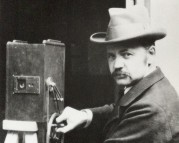 The British Library has officially launched the UK Web Archive, an archive of UK websites since 2004. There are 6,000 websites listed so far, though the expectation is that when the right legislation is enacted that the British Library will be able to harvest the eight million or so UK websites automatically and so be able to preserve the documents - as valid for research as any book or journal that the Library holds - and make them available in perpetuity. At present the Library has to select sites of particular interest, and we are proud that Who's Who of Victorian Cinema is one of the 6,000, having been archived back to April 2007 - see the record here.
The British Library has officially launched the UK Web Archive, an archive of UK websites since 2004. There are 6,000 websites listed so far, though the expectation is that when the right legislation is enacted that the British Library will be able to harvest the eight million or so UK websites automatically and so be able to preserve the documents - as valid for research as any book or journal that the Library holds - and make them available in perpetuity. At present the Library has to select sites of particular interest, and we are proud that Who's Who of Victorian Cinema is one of the 6,000, having been archived back to April 2007 - see the record here.
Dave Berry (January 2010)
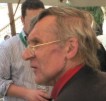 Sadly the death has been anounced of Dave Berry, one of the contributors to the Who's Who of Victorian Cinema book and this website with his entry on Welsh film pioneer Arthur Cheetham. Dave was the great chronicler of Welsh cinema, author of the magisterial Wales and Cinema: The First Hundred Years (1994). This work champions the pioneers of Weksh cinema, including those such as Birt Acres who first brought film to the principality. He was an unquenchable enthusiast for every aspect of early cinema, one who backed up his enthusiasms with definitive reference works, screenings, events and constant persuasive advocacy. He will be much missed.
Sadly the death has been anounced of Dave Berry, one of the contributors to the Who's Who of Victorian Cinema book and this website with his entry on Welsh film pioneer Arthur Cheetham. Dave was the great chronicler of Welsh cinema, author of the magisterial Wales and Cinema: The First Hundred Years (1994). This work champions the pioneers of Weksh cinema, including those such as Birt Acres who first brought film to the principality. He was an unquenchable enthusiast for every aspect of early cinema, one who backed up his enthusiasms with definitive reference works, screenings, events and constant persuasive advocacy. He will be much missed.
Optical magic (November 2009)
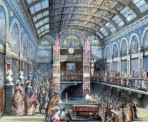 The Magic Lantern Society and the University of Westminster are presenting a second series entitled 'Professor Pepper´s Ghost': Six MORE evenings of optical magic at the old Polytechnic. The talks take place fortnightly from Thursday 12 November - Thursday 10 December 2009 and from Thursday 28 January - Thursday 25th February 2010, at The Old Cinema, University of Westminster 309 Regent Street, London W1B 2UW. Admission is free and talks commence at 7pm sharp. Among the talks are Who's Who of Victorian Cinema contributors Mervyn Heard, 'Phantasmagoria-mania'(12 November), Frank Gray, 'Visualising the Marvellous: G.A. Smith and his film 'Santa Claus' (1898)' (10 December), and Stephen Herbert, 'From Anorthoscope to Zoopraxiscope - an A-Z of Victorian animated cartoons'(25 February). More details from the Magic Lantern Society site.
The Magic Lantern Society and the University of Westminster are presenting a second series entitled 'Professor Pepper´s Ghost': Six MORE evenings of optical magic at the old Polytechnic. The talks take place fortnightly from Thursday 12 November - Thursday 10 December 2009 and from Thursday 28 January - Thursday 25th February 2010, at The Old Cinema, University of Westminster 309 Regent Street, London W1B 2UW. Admission is free and talks commence at 7pm sharp. Among the talks are Who's Who of Victorian Cinema contributors Mervyn Heard, 'Phantasmagoria-mania'(12 November), Frank Gray, 'Visualising the Marvellous: G.A. Smith and his film 'Santa Claus' (1898)' (10 December), and Stephen Herbert, 'From Anorthoscope to Zoopraxiscope - an A-Z of Victorian animated cartoons'(25 February). More details from the Magic Lantern Society site.
Pacchioni at Pordenone (September 2009)
 This year's Giornate del cinema muto, the festival of silent film held each year at Pordenone, Italy, including a section on Italo Pacchioni. Pacchioni was one of the pioneer of Italian cinema, producing his first films in 1896 with a camera made by himself and his brother Enrico after they failed to get their hands on a Lumière Cinématographe. Pacchioni continued making films til 1901, and experimented with stereoscopic cinema, but then bowed out of the business. Pordenone is showing eleven films, five dating 1896-1901 and six of uncertain date (details here). The festival runs 3-10 October 2009.
This year's Giornate del cinema muto, the festival of silent film held each year at Pordenone, Italy, including a section on Italo Pacchioni. Pacchioni was one of the pioneer of Italian cinema, producing his first films in 1896 with a camera made by himself and his brother Enrico after they failed to get their hands on a Lumière Cinématographe. Pacchioni continued making films til 1901, and experimented with stereoscopic cinema, but then bowed out of the business. Pordenone is showing eleven films, five dating 1896-1901 and six of uncertain date (details here). The festival runs 3-10 October 2009.
Pathé catalogue online (June 2009)
 The Fondation Jérôme Seydoux Pathé is an organisation deciated to collecting documents and artefacts relating to the Pathé company. Its Paris-based collection includes photographs, posters, business documents, cinematograph machinery, books, periodicals, scripts, brochures, designs. Now its informative and well-illustrated website has added the start of a filmography, based on the seven-volume Pathé catalogue produced by Henri Bousquet. The filmography (in French) covers 1896-1913 so far, and lists every Pathé film year-by-year, with full descriptions (where these exist) from original catalogues and journals. It is searchable by title, person, genre and year.
The Fondation Jérôme Seydoux Pathé is an organisation deciated to collecting documents and artefacts relating to the Pathé company. Its Paris-based collection includes photographs, posters, business documents, cinematograph machinery, books, periodicals, scripts, brochures, designs. Now its informative and well-illustrated website has added the start of a filmography, based on the seven-volume Pathé catalogue produced by Henri Bousquet. The filmography (in French) covers 1896-1913 so far, and lists every Pathé film year-by-year, with full descriptions (where these exist) from original catalogues and journals. It is searchable by title, person, genre and year.
Library of Congress on YouTube (April 2009)
 The Library of Congress has launched a channel on YouTube. Among the seven playlists offering seventy videos is one dedicated the 1904 films of the Westinghouse industrial works and one dedciated to the early film productions of Thomas Edison and colleagues. So far twenty-one titles have been published, dating 1891 to 1894. All of these titles have been available online for a number of years via the Library of Congress' American Memory site, but the YouTube videos are new digitisations. Among the titles available are Leonard-Cushing Fight (1894), Sandow (1894) and Edison Kinetoscopic Record of a Sneeze, Jan. 7, 1894.
The Library of Congress has launched a channel on YouTube. Among the seven playlists offering seventy videos is one dedicated the 1904 films of the Westinghouse industrial works and one dedciated to the early film productions of Thomas Edison and colleagues. So far twenty-one titles have been published, dating 1891 to 1894. All of these titles have been available online for a number of years via the Library of Congress' American Memory site, but the YouTube videos are new digitisations. Among the titles available are Leonard-Cushing Fight (1894), Sandow (1894) and Edison Kinetoscopic Record of a Sneeze, Jan. 7, 1894.
Visual Delights (February 2009)
 The fourth Visual Delights conference, Visual Empires, will take place at the University of Sheffield between 3-5 July 2009. Popular visual cultures have been central to the construction and propagation of imperial and colonial narratives and have helped define the nature of Empire. They have been intrinsically linked to discourses about the rise and fall of Imperial fortunes in the 19th and early 20th centuries and have been studied as both evidence of imperial attitudes to race and colonial subjects and as propaganda texts which helped spread and cement imperial and colonial ideologies. This conference seeks to explore this rich visual archive and to examine the roles played by popular visual culture in the construction of narratives concerning issues of race, identity, colonial and imperial ideologies, nationalism, patriotism and the 'Visual Empire'.
The fourth Visual Delights conference, Visual Empires, will take place at the University of Sheffield between 3-5 July 2009. Popular visual cultures have been central to the construction and propagation of imperial and colonial narratives and have helped define the nature of Empire. They have been intrinsically linked to discourses about the rise and fall of Imperial fortunes in the 19th and early 20th centuries and have been studied as both evidence of imperial attitudes to race and colonial subjects and as propaganda texts which helped spread and cement imperial and colonial ideologies. This conference seeks to explore this rich visual archive and to examine the roles played by popular visual culture in the construction of narratives concerning issues of race, identity, colonial and imperial ideologies, nationalism, patriotism and the 'Visual Empire'.
Monstrous Media/Spectral Subjects (February 2009)
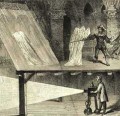 The Ninth Biennial Conference of International Gothic Association is entitled Monstrous Media/Spectral Subjects, and takes place at Lancaster University, UK, 21-24 July 2009. Subjects to be covered by the conference include Early visual technologies (phantasmagoria/ magic lantern shows/spirit photography), Gothic embodiments (staging, smoke and mirrors, automata and mechanical curiosities), Gothic on screen, Digital Gothic (web, video games, hypertext), Visualising Gothic narrative (graphic novels, comics and illustration), Monstrosities (subjects, texts, bodies, forms), Media monsters, Spectralities (subjects, spaces, environments, images) and Transgeneric crossings (cyborgs, science, fictions).
The Ninth Biennial Conference of International Gothic Association is entitled Monstrous Media/Spectral Subjects, and takes place at Lancaster University, UK, 21-24 July 2009. Subjects to be covered by the conference include Early visual technologies (phantasmagoria/ magic lantern shows/spirit photography), Gothic embodiments (staging, smoke and mirrors, automata and mechanical curiosities), Gothic on screen, Digital Gothic (web, video games, hypertext), Visualising Gothic narrative (graphic novels, comics and illustration), Monstrosities (subjects, texts, bodies, forms), Media monsters, Spectralities (subjects, spaces, environments, images) and Transgeneric crossings (cyborgs, science, fictions).
Who's Who in The Times (January 2009)
 Who's Who of Victorian Cinema is proud to have been recognised by The Times, which in its 8 January 2009 edition, in its 'Daily Universal Register' section of interesting things to see and do, recommended this website to its readers. We are grateful for the honour, and hope that the notice encouraged some curious at such a strange endeavour to pay us a visit and to leave with an interesting discovery or two.
Who's Who of Victorian Cinema is proud to have been recognised by The Times, which in its 8 January 2009 edition, in its 'Daily Universal Register' section of interesting things to see and do, recommended this website to its readers. We are grateful for the honour, and hope that the notice encouraged some curious at such a strange endeavour to pay us a visit and to leave with an interesting discovery or two.
Rashit Yangirov (December 2008)
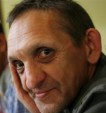 Sadly, Who's Who of Victorian Cinema has to report the death from cancer at just 54 of Rashit Yangirov, one of the original contributors to the 1996 book on which this site is based. Rashit was a journalist with Associated Press in Russia, who combined reports on the war in Chechnya with academic studies of Russian and Soviet silent cinema, based on detailed study of original documentation. For the Who's Who of Victorian Cinema book he supplied us with pieces on Ivan Akimov, Charles Aumont, A. Fedetsky, Aleksei Samarsky and Vladimir Sashin-Fydorov, providing vital information on the very first Russian filmmakers which largely had not been published before in English. His most recent work was published this year, the book Slaves of the Silent, which documents (in Russian) the lives of those Russian filmmakers who left their homeland in 1917 to find work in America, France and Germany. He will be much missed.
Sadly, Who's Who of Victorian Cinema has to report the death from cancer at just 54 of Rashit Yangirov, one of the original contributors to the 1996 book on which this site is based. Rashit was a journalist with Associated Press in Russia, who combined reports on the war in Chechnya with academic studies of Russian and Soviet silent cinema, based on detailed study of original documentation. For the Who's Who of Victorian Cinema book he supplied us with pieces on Ivan Akimov, Charles Aumont, A. Fedetsky, Aleksei Samarsky and Vladimir Sashin-Fydorov, providing vital information on the very first Russian filmmakers which largely had not been published before in English. His most recent work was published this year, the book Slaves of the Silent, which documents (in Russian) the lives of those Russian filmmakers who left their homeland in 1917 to find work in America, France and Germany. He will be much missed.
The man who made movies (October 2008)
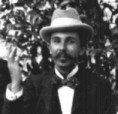 This year's Pordenone Silent Film Festival saw the launch of Paul Spehr's The Man Who Made Movies: W.K.L. Dickson, published by John Libbey. This is the first biography of William Kennedy-Laurie Dickson, the assistant to Thomas Edison who led Edison's experimentation into motion picture devices, established the 35mm film format, built the world's first film studie, and made hundreds of some of the world's first films, first for Edison and then for Biograph, where he filmed such notable subjects as Pope Leo XIII, the coronation of Queen Wilhelmina, the first Shakespeare film and scenes on the battlefields of the Anglo-Boer War. The book is not simply a biography but a major investigation into the Victorian cinema period and is certain to become an essential reference source for years to come.
This year's Pordenone Silent Film Festival saw the launch of Paul Spehr's The Man Who Made Movies: W.K.L. Dickson, published by John Libbey. This is the first biography of William Kennedy-Laurie Dickson, the assistant to Thomas Edison who led Edison's experimentation into motion picture devices, established the 35mm film format, built the world's first film studie, and made hundreds of some of the world's first films, first for Edison and then for Biograph, where he filmed such notable subjects as Pope Leo XIII, the coronation of Queen Wilhelmina, the first Shakespeare film and scenes on the battlefields of the Anglo-Boer War. The book is not simply a biography but a major investigation into the Victorian cinema period and is certain to become an essential reference source for years to come.
Who's Who book out of print (September 2008)
 Who's Who of Victorian Cinema: A Worldwide Survey, the book on which this website is based, has just gone out of print. The book, edited by Stephen Herbert and Luke McKernan, was first published by the British Film Institute in 1996. When the BFI originally took the book out of print in 2003, Herbert and McKernan decided (with the BFI's pdermission) to create the Who's Who of Victorian Cinema website, which would not only reproduce the book's contents but update and extend them, with new biographical entries and supporting resources. Meanwhile, distribution of the book was taken on by The Projection Box, which has just announced that stocks have come to an end. The book now becomes a collector's item (and can be found on some second-hand book websites). The website, of course, continues.
Who's Who of Victorian Cinema: A Worldwide Survey, the book on which this website is based, has just gone out of print. The book, edited by Stephen Herbert and Luke McKernan, was first published by the British Film Institute in 1996. When the BFI originally took the book out of print in 2003, Herbert and McKernan decided (with the BFI's pdermission) to create the Who's Who of Victorian Cinema website, which would not only reproduce the book's contents but update and extend them, with new biographical entries and supporting resources. Meanwhile, distribution of the book was taken on by The Projection Box, which has just announced that stocks have come to an end. The book now becomes a collector's item (and can be found on some second-hand book websites). The website, of course, continues.
John Barnes (June 2008)
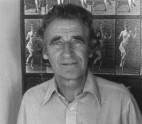 It is with great sadness that we report the death of John Barnes, the pre-eminent historian of Victorian cinema. John, who had been unwell for some time, died on June 1st. He was best known as the author of the five volume series, The Beginnings of the Cinema in England, 1894-1901 (1976-1998), his lovingly and meticulously researched history of the first five years of English cinema. Together with his twin brother Bill, John spent decades collecting and documenting the pre-cinema era and the beginnings of cinema. Their collection of artefacts, many collected at a time when few others recognised their value or their significance, eventually became the Barnes Museum of Cinematography, which was to attract film scholars from around the world. It is now housed by the Museo Nazionale del Cinema of Turin, with some artefacts in Hove Museum and Art Gallery. John's writings stand as the cornerstone of their subject, and have inspired countless other studies, not least this website and the book that preceded it. We owe him a great debt.
It is with great sadness that we report the death of John Barnes, the pre-eminent historian of Victorian cinema. John, who had been unwell for some time, died on June 1st. He was best known as the author of the five volume series, The Beginnings of the Cinema in England, 1894-1901 (1976-1998), his lovingly and meticulously researched history of the first five years of English cinema. Together with his twin brother Bill, John spent decades collecting and documenting the pre-cinema era and the beginnings of cinema. Their collection of artefacts, many collected at a time when few others recognised their value or their significance, eventually became the Barnes Museum of Cinematography, which was to attract film scholars from around the world. It is now housed by the Museo Nazionale del Cinema of Turin, with some artefacts in Hove Museum and Art Gallery. John's writings stand as the cornerstone of their subject, and have inspired countless other studies, not least this website and the book that preceded it. We owe him a great debt.
Fight pictures (May 2008)
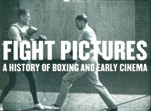 After many, many years in production, Dan Streible's long-awaited Fight Pictures: A History of Boxing and Early Cinema has been published by University of California Press. It is an entertaining and exhaustively researched account of the interlocking histories of boxing and early cinema, showing how a stigmatized sport was turned into legitimate entertainment. Boxing was a part of filmmaking for 1894 onwards, and Streible provides rich information on the place of boxing in Victorian cinema, including the stories of James Corbett, Bob Fitzsimmons, Jim Jeffries, Enoch Rector and more. More information is on the University of California Pess website.
After many, many years in production, Dan Streible's long-awaited Fight Pictures: A History of Boxing and Early Cinema has been published by University of California Press. It is an entertaining and exhaustively researched account of the interlocking histories of boxing and early cinema, showing how a stigmatized sport was turned into legitimate entertainment. Boxing was a part of filmmaking for 1894 onwards, and Streible provides rich information on the place of boxing in Victorian cinema, including the stories of James Corbett, Bob Fitzsimmons, Jim Jeffries, Enoch Rector and more. More information is on the University of California Pess website.
Now with films online (April 2008)
 The Who's Who of Victorian Cinema website now includes links to freely (and legitimately) available moving image files of Victorian films which can be found online on sites such as YouTube and American Memory. The links appears at the top of the left-hand column of the pages for individuals. A further addition is a page of sample clips, Films Online, which has been added to the site's Resources section. The films come from the Victorian era (pre-1901) only, so films made later in an individual's career are not featured. More links and clips will be added in due course.
The Who's Who of Victorian Cinema website now includes links to freely (and legitimately) available moving image files of Victorian films which can be found online on sites such as YouTube and American Memory. The links appears at the top of the left-hand column of the pages for individuals. A further addition is a page of sample clips, Films Online, which has been added to the site's Resources section. The films come from the Victorian era (pre-1901) only, so films made later in an individual's career are not featured. More links and clips will be added in due course.
Méliès, magicien du cinéma (April 2008)
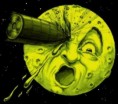 A major exhibition on Georges Méliès opens on 16 April at the Cinémathèque française in Paris. Entitled Méliès, magicien du cinéma, the exhibition looks at his life, background, work and influence, and features many exhibits not seen in public before. A lavish 360-page catalogue has been produced, L'oeuvre de Georges Méliès, edited by Jacques Malthete and Laurent Mannoni, and there are screenings and DVD releases to accompany the exhibition. Further details are available (in French) from the exhibition website.
A major exhibition on Georges Méliès opens on 16 April at the Cinémathèque française in Paris. Entitled Méliès, magicien du cinéma, the exhibition looks at his life, background, work and influence, and features many exhibits not seen in public before. A lavish 360-page catalogue has been produced, L'oeuvre de Georges Méliès, edited by Jacques Malthete and Laurent Mannoni, and there are screenings and DVD releases to accompany the exhibition. Further details are available (in French) from the exhibition website.
What Happens Next? (February 2008)
 The PM Gallery in West London, in association with Thames Valley University, is hosting an exhibition on the photographic sequence, entitled What Happens Next?, looking at its evolution from the work of Eadweard Muybridge to the present day. The exhibition, which runs 8 February-15 March, takes in the work of artists John Blakemore, Julie Cassels, Matt Finn, Steffi Klenz, Mari Mahr, Edweard Muybridge, James Newton, Nanna Saarhelo, Andrew Warstat, Sally Waterman and Cary Welling. Coinciding with the exhibition, there is an article on Muybridge in the 9 February 2008 edition of The New Scientist on Muybridge's work and the enduring legacy of chronophotography, which includes an interview with co-editor of this site, Stephen Herbert. For further information, visit the exhibition site.
The PM Gallery in West London, in association with Thames Valley University, is hosting an exhibition on the photographic sequence, entitled What Happens Next?, looking at its evolution from the work of Eadweard Muybridge to the present day. The exhibition, which runs 8 February-15 March, takes in the work of artists John Blakemore, Julie Cassels, Matt Finn, Steffi Klenz, Mari Mahr, Edweard Muybridge, James Newton, Nanna Saarhelo, Andrew Warstat, Sally Waterman and Cary Welling. Coinciding with the exhibition, there is an article on Muybridge in the 9 February 2008 edition of The New Scientist on Muybridge's work and the enduring legacy of chronophotography, which includes an interview with co-editor of this site, Stephen Herbert. For further information, visit the exhibition site.
Georges Méliès: The First Wizard of Cinema (January 2008)
 Flicker Alley, the American producer of specialist silent DVDs, has announced the release in March of Georges Méliès: The First Wizard of Cinema 1896-1913). This is a five-disc DVD set, comprising over 170 of the films of Georges Méliès (most of his extant output), plus the renowned Georges Franju documentary, Le Grand Méliès (1953). It ranges from his first film Une partie de cartes (1896) to his last, Le voyage de la famille Bourrichon (1913), and includes such classics as Voyage dans la lune, Les quatres cent farces du diable and A la conquète du pôle. In total it comprises some thirteen hours of material, taken from archives and private collections in eight countries. This prestigious release has been put together by Eric Lange and David Shepard, and includes fifteen films reproduced from partial or complete hand-colored original prints, and thirteen accompanied with the original English narration. More details from the Flicker Alley site.
Flicker Alley, the American producer of specialist silent DVDs, has announced the release in March of Georges Méliès: The First Wizard of Cinema 1896-1913). This is a five-disc DVD set, comprising over 170 of the films of Georges Méliès (most of his extant output), plus the renowned Georges Franju documentary, Le Grand Méliès (1953). It ranges from his first film Une partie de cartes (1896) to his last, Le voyage de la famille Bourrichon (1913), and includes such classics as Voyage dans la lune, Les quatres cent farces du diable and A la conquète du pôle. In total it comprises some thirteen hours of material, taken from archives and private collections in eight countries. This prestigious release has been put together by Eric Lange and David Shepard, and includes fifteen films reproduced from partial or complete hand-colored original prints, and thirteen accompanied with the original English narration. More details from the Flicker Alley site.
Brian Coe 1930-2007 (November 2007)
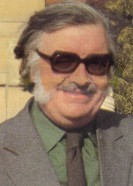 It is sad to have to report the death last month of Brian Coe, one of the original contributors to the Who's Who of Victorian Cinema book. Brian was Curator of the Kodak Museum 1969-1984, then Curator at the Royal Photographic Society in Bath, before joining the Museum of the Moving Image in 1989 as its special events co-ordinator. He instituted several important exhibitions on photography and cinematography, and his many publications in the field have remained standard works. In particular his The History of Movie Photography is the indispensible guide to its subject, not least for its devotion of nineteenth-century optical toys, chronophotography, Victorian and early cinema technologies. He was a kindly, knowledgeable and gregarious man. He will be much missed.
It is sad to have to report the death last month of Brian Coe, one of the original contributors to the Who's Who of Victorian Cinema book. Brian was Curator of the Kodak Museum 1969-1984, then Curator at the Royal Photographic Society in Bath, before joining the Museum of the Moving Image in 1989 as its special events co-ordinator. He instituted several important exhibitions on photography and cinematography, and his many publications in the field have remained standard works. In particular his The History of Movie Photography is the indispensible guide to its subject, not least for its devotion of nineteenth-century optical toys, chronophotography, Victorian and early cinema technologies. He was a kindly, knowledgeable and gregarious man. He will be much missed.
Films of the Holy Lands in 1897 (October 2007)
 An astonishing discovery was unveiled at the 2007 Giornate del Cinema Muto, held in Pordenone, Italy. Ninety-three films taken in Palestine, Egypt and Turkey in 1897 (or possibly a little later) were discovered in an antique shop in March 2007 by Lobster Films of Paris, and were exhibited for the first time to the festival. The films, all from negatives, look superb. They are a combination of actualities, showing street and rural scenes, and scenes from what appear to be two childhoods of Christ, one evidently filmed in the 'Holy Lands', the other possibly in France. Much further investigation is required, but it seems likely that the films are those made by Léar, or Albert Kirchner, who is known to have filmed in Palestine and Egypt at this time, and who made a popular Life of Christ.
An astonishing discovery was unveiled at the 2007 Giornate del Cinema Muto, held in Pordenone, Italy. Ninety-three films taken in Palestine, Egypt and Turkey in 1897 (or possibly a little later) were discovered in an antique shop in March 2007 by Lobster Films of Paris, and were exhibited for the first time to the festival. The films, all from negatives, look superb. They are a combination of actualities, showing street and rural scenes, and scenes from what appear to be two childhoods of Christ, one evidently filmed in the 'Holy Lands', the other possibly in France. Much further investigation is required, but it seems likely that the films are those made by Léar, or Albert Kirchner, who is known to have filmed in Palestine and Egypt at this time, and who made a popular Life of Christ.
Patentee of Zoetrope revealed (October 2007)
 The first patentee of the Zoetrope, and the person who gave it its name, was William E. Lincoln (1847-19??). First marketed by the Milton Bradley toy and games company, the drum-form Zoetrope was the most popular form of moving image device in Victorian times, after the initial success of the Phenakistiscope spinning disc toy, and before the emergence of the photographic motion picture film industry. No photograph of Lincoln was known to exist until the photograph reproduced left, showing William E. Lincoln when he was seventy-four, surfaced recently. More information on Lincoln will be published on the Who's Who of Victorian Cinema site in due course.
The first patentee of the Zoetrope, and the person who gave it its name, was William E. Lincoln (1847-19??). First marketed by the Milton Bradley toy and games company, the drum-form Zoetrope was the most popular form of moving image device in Victorian times, after the initial success of the Phenakistiscope spinning disc toy, and before the emergence of the photographic motion picture film industry. No photograph of Lincoln was known to exist until the photograph reproduced left, showing William E. Lincoln when he was seventy-four, surfaced recently. More information on Lincoln will be published on the Who's Who of Victorian Cinema site in due course.
Screen Heritage Survey (September 2007)
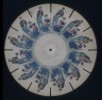 From 24 September, the UK Screen Heritage Network is organising an online survey of UK museums and other collections which hold artefacts associated with the moving image and other screen-related entertainments. The Screen Heritage Network is a group of museums, archives, media producers, broadcasters and academic institutions that has come together under the auspices of the Museums, Libraries and Archives Council to advance the concept of screen heritage and encourage its preservation and promote wider access. Its interpretation of screen heritage encompasses the magic lantern and optical toys, as well as all aspects of cinema and television production, and on to the video games and handheld technologies of today. The survey runs until the end of November, and the information gathered will be used to create the first-ever directory of collections of moving image and screen-related artefacts in the UK.
From 24 September, the UK Screen Heritage Network is organising an online survey of UK museums and other collections which hold artefacts associated with the moving image and other screen-related entertainments. The Screen Heritage Network is a group of museums, archives, media producers, broadcasters and academic institutions that has come together under the auspices of the Museums, Libraries and Archives Council to advance the concept of screen heritage and encourage its preservation and promote wider access. Its interpretation of screen heritage encompasses the magic lantern and optical toys, as well as all aspects of cinema and television production, and on to the video games and handheld technologies of today. The survey runs until the end of November, and the information gathered will be used to create the first-ever directory of collections of moving image and screen-related artefacts in the UK.
The Invention of Hugo Cabret (August 2007)
 The Invention of Hugo Cabret is a children's novel by Brian Selznick, designed for the 9-12 age group. It is a historical mystery story, set in Paris in the early 1930s, in a mixture of text and graphics meant to imitate silent movie-style. A leading figure in the story is Georges Méliès, who runs a toy store as he did in reality towards the end of his life, whose fortune becomes intertwined with that of the boy hero, Hugo. The book was first published in the USA in January 2007. The book has generated a lot of interest, and it is rumoured that Martin Scorsese is considering making a film of it. The book can be purchased from Amazon.co.uk. The book also has a website, with background information on Méliès, at www.theinventionofhugocabret.com.
The Invention of Hugo Cabret is a children's novel by Brian Selznick, designed for the 9-12 age group. It is a historical mystery story, set in Paris in the early 1930s, in a mixture of text and graphics meant to imitate silent movie-style. A leading figure in the story is Georges Méliès, who runs a toy store as he did in reality towards the end of his life, whose fortune becomes intertwined with that of the boy hero, Hugo. The book was first published in the USA in January 2007. The book has generated a lot of interest, and it is rumoured that Martin Scorsese is considering making a film of it. The book can be purchased from Amazon.co.uk. The book also has a website, with background information on Méliès, at www.theinventionofhugocabret.com.
Queen Victoria comes to Canterbury (July 2007)
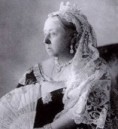 The Queen Victoria's Diamond Jubilee show is featuring at this year's Canterbury Festival. The show is a recreation of Queen Victoria's tour around London on 22 June 1897, to mark sixty years of her reign. The event was filmed by many motion picture camera operators dotted along the route, and the show (already seen in London and Nottingham) takes the audience around the route with a combination of films, photographs, music and actors reading eye-witness testimony from figures such as Mark Twain and Edward Burne-Jones. The show is presented by Luke McKernan, with Neil Brand and Mo Heard reading the eye-witness accounts and Stephen Horne playing the piano. Priority booking for the festival is now open, with general public booking for 13 August. The show takes place at the International Study Centre, next to Canterbury Cathedral, on 19 October. Further details here.
The Queen Victoria's Diamond Jubilee show is featuring at this year's Canterbury Festival. The show is a recreation of Queen Victoria's tour around London on 22 June 1897, to mark sixty years of her reign. The event was filmed by many motion picture camera operators dotted along the route, and the show (already seen in London and Nottingham) takes the audience around the route with a combination of films, photographs, music and actors reading eye-witness testimony from figures such as Mark Twain and Edward Burne-Jones. The show is presented by Luke McKernan, with Neil Brand and Mo Heard reading the eye-witness accounts and Stephen Horne playing the piano. Priority booking for the festival is now open, with general public booking for 13 August. The show takes place at the International Study Centre, next to Canterbury Cathedral, on 19 October. Further details here.
When the Movies Began... (June 2007)
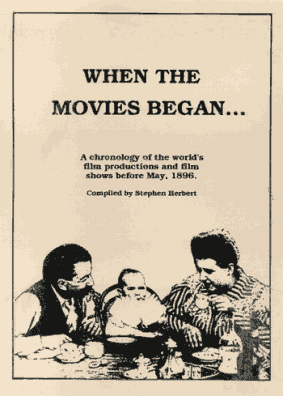 The latest feature to be added to the Who's Who of Victorian Cinema web site is When the Movies Began. This is a chronology of the world's film productions and film shows before May 1896. It was originally compiled by Stephen Herbert and published as a booklet by The Projection Box in 1994. This updated and redesigned version incorporates new research, in particular the work of Deac Rossell, and it will be regularly revised and updated. There is also a full introduction and list of references. Any comments and corrections are welcome. When the Movies Began is included within the Features section of this web site.
The latest feature to be added to the Who's Who of Victorian Cinema web site is When the Movies Began. This is a chronology of the world's film productions and film shows before May 1896. It was originally compiled by Stephen Herbert and published as a booklet by The Projection Box in 1994. This updated and redesigned version incorporates new research, in particular the work of Deac Rossell, and it will be regularly revised and updated. There is also a full introduction and list of references. Any comments and corrections are welcome. When the Movies Began is included within the Features section of this web site.
Nineteen (Obscure) Frames that Changed the World (May 2007)
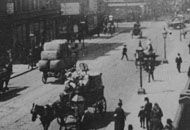 In October 1888 the French born inventor Louis Aimé Augustin Le Prince recorded what is thought to be the first film in the history of cinema. His subject was Leeds Bridge – the ebb and flow of humanity – people going about their daily business unaware that their motions were being inscribed into history. The surviving frames of this footage are owned by the National Media Museum in Bradford where Curator of Cinematography, Michael Harvey, has been working with New York video artist Ken Jacobs for 18 months to provide footage for the unique exhibition Nineteen (Obscure) Frames That Changed the World. "Ken Jacobs probes the magnitude and infinity of the existing frames, using a unique 3D projection system (with 3d glasses) to reveal hidden beauty and unlock great waves of motion. Ken Jacobs’ films, performances and installations inspire a sense of awe and mystery that audiences must have felt when confronted by moving images at the very start of cinema." The exhibition opens on Thursday 24 May and runs from 25 May–1 June, 11.30am–6.30pm with free entry. Further information here.
In October 1888 the French born inventor Louis Aimé Augustin Le Prince recorded what is thought to be the first film in the history of cinema. His subject was Leeds Bridge – the ebb and flow of humanity – people going about their daily business unaware that their motions were being inscribed into history. The surviving frames of this footage are owned by the National Media Museum in Bradford where Curator of Cinematography, Michael Harvey, has been working with New York video artist Ken Jacobs for 18 months to provide footage for the unique exhibition Nineteen (Obscure) Frames That Changed the World. "Ken Jacobs probes the magnitude and infinity of the existing frames, using a unique 3D projection system (with 3d glasses) to reveal hidden beauty and unlock great waves of motion. Ken Jacobs’ films, performances and installations inspire a sense of awe and mystery that audiences must have felt when confronted by moving images at the very start of cinema." The exhibition opens on Thursday 24 May and runs from 25 May–1 June, 11.30am–6.30pm with free entry. Further information here.
Projection Box Awards (May 2007)
 Early film and pre-cinema publishers The Projection Box have announced a new award for essays on projected and moving images to 1915. The aims of this award are to encourage new research and new thinking into any historical, artistic or technical aspect of projected and moving images up to 1915; and to promote engaging, accessible, and imaginative work. The first prize of £250 is for an essay of between 5,000 and 8,000 words (including notes). The deadline for entries is 18 January 2008. The winning essay will also be published in an issue of Early Popular Visual Culture (Routledge). At the discretion of the judges, two runners-up will each receive books and CD-Roms of their choice (published by The Projection Box), to the value of £100. Further details from www.pbawards.co.uk.
Early film and pre-cinema publishers The Projection Box have announced a new award for essays on projected and moving images to 1915. The aims of this award are to encourage new research and new thinking into any historical, artistic or technical aspect of projected and moving images up to 1915; and to promote engaging, accessible, and imaginative work. The first prize of £250 is for an essay of between 5,000 and 8,000 words (including notes). The deadline for entries is 18 January 2008. The winning essay will also be published in an issue of Early Popular Visual Culture (Routledge). At the discretion of the judges, two runners-up will each receive books and CD-Roms of their choice (published by The Projection Box), to the value of £100. Further details from www.pbawards.co.uk.
The Man Who Stopped Time (May 2007)
 His centenary may have passed three years ago, but interest in 'the father of motion pictures' continues unabated, and a new 'popular science' book on Eadweard Muybridge has just been published. Brian Clegg's The Man Who Stopped Time: The Illuminating Story of Eadweard Muybridge, Father of the Motion Picture, Pioneer of Photography, Murderer emphasizes the more dramatic aspects of Muybridge's life, but also provides a good, popular and up-to-date account for the general reader for a history which never fails to fascinate. There a positive review by Stephen Herbert on his Eadweard Muybridge site, or see the author's own account via the Popular Science website. The book can be ordered via Amazon.co.uk, here.
His centenary may have passed three years ago, but interest in 'the father of motion pictures' continues unabated, and a new 'popular science' book on Eadweard Muybridge has just been published. Brian Clegg's The Man Who Stopped Time: The Illuminating Story of Eadweard Muybridge, Father of the Motion Picture, Pioneer of Photography, Murderer emphasizes the more dramatic aspects of Muybridge's life, but also provides a good, popular and up-to-date account for the general reader for a history which never fails to fascinate. There a positive review by Stephen Herbert on his Eadweard Muybridge site, or see the author's own account via the Popular Science website. The book can be ordered via Amazon.co.uk, here.
The first edited motion picture? (April 2007)
 It now seems confirmed that there was a screening of some newly-produced Zoopraxiscope glass plates in San Francisco in the Spring of 1881, one of which features sequential actions: perhaps the first 'edited' motion picture informed by the camera - meticulously painted
images based closely on photographic sequences to create a succession of different 'shots'; and for dramatic effect. A May 1881 report in the San Francisco Post described this as: "a deerhunt, where a deer, followed successfully [successively?] by dogs and horsemen, traverses over the illuminated screen". The report says these new subjects "can now be illustrated". Stephen Herbert thinks it is reasonable to suppose they were all shown at this time, though it is just possible that the report is taken from a written submission by Eadweard Muybridge. But even if it was, it is quite likely that he started using them in his shows. Most of the subjects described in the report survive, including the little-known 'three-shot' motion picture Deerhunt. More details can be found on the Eadweard Muybridge Chronology (1881, May 16 entry).
It now seems confirmed that there was a screening of some newly-produced Zoopraxiscope glass plates in San Francisco in the Spring of 1881, one of which features sequential actions: perhaps the first 'edited' motion picture informed by the camera - meticulously painted
images based closely on photographic sequences to create a succession of different 'shots'; and for dramatic effect. A May 1881 report in the San Francisco Post described this as: "a deerhunt, where a deer, followed successfully [successively?] by dogs and horsemen, traverses over the illuminated screen". The report says these new subjects "can now be illustrated". Stephen Herbert thinks it is reasonable to suppose they were all shown at this time, though it is just possible that the report is taken from a written submission by Eadweard Muybridge. But even if it was, it is quite likely that he started using them in his shows. Most of the subjects described in the report survive, including the little-known 'three-shot' motion picture Deerhunt. More details can be found on the Eadweard Muybridge Chronology (1881, May 16 entry).
Eadweard Muybridge chronology (April 2007)
 Stephen Herbert has published an online chronology to the the life and work of Eadweard Muybridge (1830-1904). It covers events in his life, and his whereabouts; Muybridge's published photographs, books, articles, and letters; Muybridge's unpublished correspondence; correspondence (by others) that mentions Muybridge, where this is useful; books, articles, newspaper reports, advertisements, published during Muybridge's lifetime, that refer to his life or work. The chronology is still being developed, corrected, and expanded. It is available at http://www.stephenherbert.co.uk/muybchronPAGE.htm.
Stephen Herbert has published an online chronology to the the life and work of Eadweard Muybridge (1830-1904). It covers events in his life, and his whereabouts; Muybridge's published photographs, books, articles, and letters; Muybridge's unpublished correspondence; correspondence (by others) that mentions Muybridge, where this is useful; books, articles, newspaper reports, advertisements, published during Muybridge's lifetime, that refer to his life or work. The chronology is still being developed, corrected, and expanded. It is available at http://www.stephenherbert.co.uk/muybchronPAGE.htm.
Victorians in Motion (February 2007)
 VISAWUS, the Victorian Interdisciplinary Studies Association of the Western United States is holding its annual meeting 25-27 October 2007 in Boulder, Colorado, USA. The theme of the meeting this year is "Victorians in Motion", and there is a call for papers whose broad range of topics includes not just travel and transportation but "vicarious motion: moving panoramas and other technologies that simulated travel", "representing mobility" and "performative motion", each of which seem to offer promise to someone interested in the motion picture in all its many forms in the nineteenth century. Proposals are invited for twenty-minute papers, deadline 8 May 2007.
VISAWUS, the Victorian Interdisciplinary Studies Association of the Western United States is holding its annual meeting 25-27 October 2007 in Boulder, Colorado, USA. The theme of the meeting this year is "Victorians in Motion", and there is a call for papers whose broad range of topics includes not just travel and transportation but "vicarious motion: moving panoramas and other technologies that simulated travel", "representing mobility" and "performative motion", each of which seem to offer promise to someone interested in the motion picture in all its many forms in the nineteenth century. Proposals are invited for twenty-minute papers, deadline 8 May 2007.
Alfred West catalogue online (February 2007)
 The 1912 catalogue of the naval filmmaker and photographer Alfred J. West, A Synopsis of the Life-Work of Alfred West, has been published online in PDF format by the Wessex Film and Sound Archive. West was the man behind ‘Our Navy’ and ‘Our Army’, hugely popular multi-media shows comprising films, photographs, songs and dramas. West was active as a filmmaker from 1897-1912, based at Southsea, Hampshire. The original catalogue is held in the British Library. The catalogue can be downloaded from www.hants.gov.uk/record-office/film/west.html.
The 1912 catalogue of the naval filmmaker and photographer Alfred J. West, A Synopsis of the Life-Work of Alfred West, has been published online in PDF format by the Wessex Film and Sound Archive. West was the man behind ‘Our Navy’ and ‘Our Army’, hugely popular multi-media shows comprising films, photographs, songs and dramas. West was active as a filmmaker from 1897-1912, based at Southsea, Hampshire. The original catalogue is held in the British Library. The catalogue can be downloaded from www.hants.gov.uk/record-office/film/west.html.
The Bioscope (February 2007)
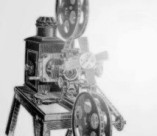 The Bioscope is a new information resource for early and silent cinema, in blog format. The Bioscope aims to keep you up-to-date on news, information, events, documents, publications, discoveries and anything else on early and silent cinema (which include the 'pre-cinema' and Victorian cinema fields). Contributions are supplied by invited registered users only (though anyone can add comments to the posts), but access may be widened eventually. The web address is http://bioscopic.wordpress.com, where those with appropriate news readers can subscribe to the RSS news feed.
The Bioscope is a new information resource for early and silent cinema, in blog format. The Bioscope aims to keep you up-to-date on news, information, events, documents, publications, discoveries and anything else on early and silent cinema (which include the 'pre-cinema' and Victorian cinema fields). Contributions are supplied by invited registered users only (though anyone can add comments to the posts), but access may be widened eventually. The web address is http://bioscopic.wordpress.com, where those with appropriate news readers can subscribe to the RSS news feed.
Marey book and DVD (November 2006)
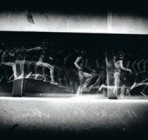 Arcadia in France has published the proceedings of a recent colloquium held in Paris on the work of the French chronophotographer Etienne-Jules Marey, marking the centenary of his death. E.J. Marey Actes du Colloque du Centenaire (priced at 40 Euros) comes with a DVD which contains 400 chronophotographic 'films' by Marey, Georges Demenÿ, and others. The book and DVD are available from Amazon.fr.
Arcadia in France has published the proceedings of a recent colloquium held in Paris on the work of the French chronophotographer Etienne-Jules Marey, marking the centenary of his death. E.J. Marey Actes du Colloque du Centenaire (priced at 40 Euros) comes with a DVD which contains 400 chronophotographic 'films' by Marey, Georges Demenÿ, and others. The book and DVD are available from Amazon.fr.
R.W. Paul on DVD (November 2006)
 The British Film Insitute has released a DVD of sixty-two films made by Robert Paul. Paul is one of the leading pioneers of British cinema, and indeed world cinema. The DVD contains dramas, tricks films, actualities, travelogues and comedies, including such key titles as Paul's film of the 1896 Derby, films of Queen Victoria's Diamond Jubilee, Come Along Do, The ? Motorist, and newsfilm of the 1898 disaster caused by the launch of H.M.S. Albion. The DVD runs for 147 minutes and includes a commentary by Ian Christie (author of a forthcoming book on Paul) and piano accompaniment by Stephen Horne. For further details, see here.
The British Film Insitute has released a DVD of sixty-two films made by Robert Paul. Paul is one of the leading pioneers of British cinema, and indeed world cinema. The DVD contains dramas, tricks films, actualities, travelogues and comedies, including such key titles as Paul's film of the 1896 Derby, films of Queen Victoria's Diamond Jubilee, Come Along Do, The ? Motorist, and newsfilm of the 1898 disaster caused by the launch of H.M.S. Albion. The DVD runs for 147 minutes and includes a commentary by Ian Christie (author of a forthcoming book on Paul) and piano accompaniment by Stephen Horne. For further details, see here.
Pre-cinema and 'Cinematicity' (November 2006)
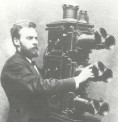 A call for papers has gopne out for a conference entitled Pre-cinema and 'Cinematicity' / 1895: Before and After, to be held 24-25 March 2007 by the British Comparative Literature Association and the Centre for Film Studies, University of Essex (UK). The aim of the conference is to bring together scholars interested in exploring the history of pre- and early film: the previsions of cinema as both technology and cultural form, and early cinema's influence on twentieth-century art, literature and culture. Proposals for papers of twenty minutes are invited, and abstracts of about 300 words should be submitted by 7 January 2007. The keynote speakers are Ian Christie, Tom Gunning and Marina Warner. For further details, visit http://www.essex.ac.uk/filmstudies/Conference07.htm.
A call for papers has gopne out for a conference entitled Pre-cinema and 'Cinematicity' / 1895: Before and After, to be held 24-25 March 2007 by the British Comparative Literature Association and the Centre for Film Studies, University of Essex (UK). The aim of the conference is to bring together scholars interested in exploring the history of pre- and early film: the previsions of cinema as both technology and cultural form, and early cinema's influence on twentieth-century art, literature and culture. Proposals for papers of twenty minutes are invited, and abstracts of about 300 words should be submitted by 7 January 2007. The keynote speakers are Ian Christie, Tom Gunning and Marina Warner. For further details, visit http://www.essex.ac.uk/filmstudies/Conference07.htm.
Birt Acres biography on CD (October 2006)
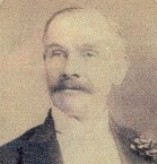 The latest CD from The Projection Box is Frontiersman to Film-maker, a biography of the pioneering British cinematographer Birt Acres, written by his grandson, Alan Birt Acres. The biography blends family memories, archive documents and original research to give the personal history of the first man successfully to take and project 35mm films in Britain. Acres is still a little-known figure, though hopefully the recent discovery of some of his films by the National Fairground Archive (see June 2006 news below) and this new contribution to the historiography of Victorian cinema will help make his name and his work much better known and appreciated. The biography includes valuable information on Acres' co-workers, including Robert Paul, Henry Short, Ludwig Stollwerck and Arthur Melbourne Cooper. Further details are available here.
The latest CD from The Projection Box is Frontiersman to Film-maker, a biography of the pioneering British cinematographer Birt Acres, written by his grandson, Alan Birt Acres. The biography blends family memories, archive documents and original research to give the personal history of the first man successfully to take and project 35mm films in Britain. Acres is still a little-known figure, though hopefully the recent discovery of some of his films by the National Fairground Archive (see June 2006 news below) and this new contribution to the historiography of Victorian cinema will help make his name and his work much better known and appreciated. The biography includes valuable information on Acres' co-workers, including Robert Paul, Henry Short, Ludwig Stollwerck and Arthur Melbourne Cooper. Further details are available here.
Before the Nickelodeon (August 2006)
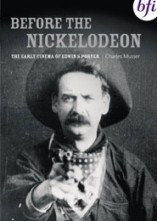 The British Film Institute has published a DVD of Charles Musser's 1982 documentary film Before the Nickelodeon. The film documents the genesis of early cinema through the example of Edwin S. Porter, showing how he helped establish the structure and codes of cinematic language through such titles as The Great Train Robbery (1903) and Life of an American Fireman (1903). The film features numerous examples from Porter's early work, such as The Finish of Bridget McKeen (1901), Terrible Teddy, the Grizzly King (1901) and Jack and the Beanstalk (1902), plus other early Edison titles, including The Corbett-Courtney Fight (1894) and The Kiss (1896), starring May Irwin. The film features a commentary from Blanche Sweet, one of D.W. Griffith's Biograph actresses, and lurking among the credited 'voices' on the film are Robert Altman, D.A. Pennebaker, Jay Leyda, Louis Malle and Milos Forman. Further details are available here.
The British Film Institute has published a DVD of Charles Musser's 1982 documentary film Before the Nickelodeon. The film documents the genesis of early cinema through the example of Edwin S. Porter, showing how he helped establish the structure and codes of cinematic language through such titles as The Great Train Robbery (1903) and Life of an American Fireman (1903). The film features numerous examples from Porter's early work, such as The Finish of Bridget McKeen (1901), Terrible Teddy, the Grizzly King (1901) and Jack and the Beanstalk (1902), plus other early Edison titles, including The Corbett-Courtney Fight (1894) and The Kiss (1896), starring May Irwin. The film features a commentary from Blanche Sweet, one of D.W. Griffith's Biograph actresses, and lurking among the credited 'voices' on the film are Robert Altman, D.A. Pennebaker, Jay Leyda, Louis Malle and Milos Forman. Further details are available here.
A new feature (August 2006)
 This site has been redesigned slightly to accommodate a new section, Features. This brings together the existing Technical Essay and Historiographics of Victorian Cinema essay, plus a new 'essay' on the venues in which Victorian films were shown, Victorian 'Cinemas'. Other background features to the world of Victorian cinema will be added here in due course, and the editors welcome suggestions from interested contributors.
This site has been redesigned slightly to accommodate a new section, Features. This brings together the existing Technical Essay and Historiographics of Victorian Cinema essay, plus a new 'essay' on the venues in which Victorian films were shown, Victorian 'Cinemas'. Other background features to the world of Victorian cinema will be added here in due course, and the editors welcome suggestions from interested contributors.
A ghost-raising entertainment (July 2006)
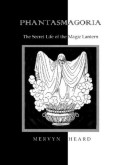 The Projection Box has published Mervyn Heard's Phantasmagoria: The Secret Life of the Magic Lantern. This is a comprehensive and expert account of the Phantasmagoria, that branch of the magic lantern which specialised in creating ghostly apparitions. The book traces the history of the recreation of the ghosts of the departed from ancient times to today, with emphasis on the use of the magic lantern to project images of phantoms. The book covers Etienne-Gaspard Robertson's fantasmagorie in revolutionary Paris, the 1860s theatrical ghost of Professor Pepper, the Phantasmagoria presentations of Paul de Philipsthal, and the cinema's adoption of similar spectral techniques. The book is handsomely illustrated in black-and-white and colour. For further details, visit here.
The Projection Box has published Mervyn Heard's Phantasmagoria: The Secret Life of the Magic Lantern. This is a comprehensive and expert account of the Phantasmagoria, that branch of the magic lantern which specialised in creating ghostly apparitions. The book traces the history of the recreation of the ghosts of the departed from ancient times to today, with emphasis on the use of the magic lantern to project images of phantoms. The book covers Etienne-Gaspard Robertson's fantasmagorie in revolutionary Paris, the 1860s theatrical ghost of Professor Pepper, the Phantasmagoria presentations of Paul de Philipsthal, and the cinema's adoption of similar spectral techniques. The book is handsomely illustrated in black-and-white and colour. For further details, visit here.
'First' British fiction film found (June 2006)
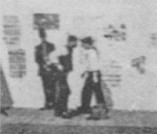 The 'first' British fiction film, Arrest of a Pickpocket, has been found. The film was made in April 1895 by Birt Acres and Robert Paul. It is one of a small collection of Acres/Paul and Edison films which were owned by travelling showman George Williams, whose grandson has passed the films on to the National Fairground Archive. The film shows a pickpocket being caught in the act and captured by a policeman and a passing sailor. Remarkably, newspapers used as a backdrop to the set have enabled historians to date the film precisely to the third week in April. Arguably the 'first' British fiction film is Acres and Paul's first film, a test film shot outside Acres' house Clovelly Cottage in February or March 1895, but Arrest of a Pickpocket would have been shown commercially. The collection is comparable in interest to the Henville collection of Acres and Paul films, found in 1995, which included their celebrated film of the 1895 Derby. Click here for news of the discovery.
The 'first' British fiction film, Arrest of a Pickpocket, has been found. The film was made in April 1895 by Birt Acres and Robert Paul. It is one of a small collection of Acres/Paul and Edison films which were owned by travelling showman George Williams, whose grandson has passed the films on to the National Fairground Archive. The film shows a pickpocket being caught in the act and captured by a policeman and a passing sailor. Remarkably, newspapers used as a backdrop to the set have enabled historians to date the film precisely to the third week in April. Arguably the 'first' British fiction film is Acres and Paul's first film, a test film shot outside Acres' house Clovelly Cottage in February or March 1895, but Arrest of a Pickpocket would have been shown commercially. The collection is comparable in interest to the Henville collection of Acres and Paul films, found in 1995, which included their celebrated film of the 1895 Derby. Click here for news of the discovery.
BFI database goes online (May 2006)
 At long last, the British Film Institute's film and television database (variously known before now as SIFT or BID) has been published online. It is not immediately clear from the restricted layout what the extent of this important resource is, but it contains some 810,000 records, and includes the entirety of the BFI National Film and Television Archive's collection of Victorian cinema (around 500 titles), mostly with detailed catalogue descriptions (click on the 'synopses' option on the left-hand menu to obtain the Archive's shotlist descriptions, where these exist). The database is accessible at www.bfi.org.uk/filmtvinfo/ftvdb.
At long last, the British Film Institute's film and television database (variously known before now as SIFT or BID) has been published online. It is not immediately clear from the restricted layout what the extent of this important resource is, but it contains some 810,000 records, and includes the entirety of the BFI National Film and Television Archive's collection of Victorian cinema (around 500 titles), mostly with detailed catalogue descriptions (click on the 'synopses' option on the left-hand menu to obtain the Archive's shotlist descriptions, where these exist). The database is accessible at www.bfi.org.uk/filmtvinfo/ftvdb.
Centenary no more (April 2006)
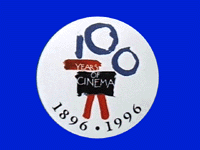 In 1996, the 'centenary' of cinema in Britain was marked by a film industry organisation, Cinema 100, which co-ordinated various centenary events. Among its many activities was the placing of plaques on buildings which represented pioneering persons or key locations in British cinema history. Perhaps most significant was the plaque placed at 70 Oxford Street, London, location of the first film exhibition in Britain on 17 October 1894, when a Kinetoscope parlour was opened there by Maguire and Baucus. In fact, the electrical business at no. 70 was not interested in having the plaque, which was instead placed at no. 76. Sadly, the plaque was taken down recently when the building was refurbished, and its whereabouts are unknown. It seems the would-be permanent marker of the birth of film exhibition in Britain lasted a mere ten years.
In 1996, the 'centenary' of cinema in Britain was marked by a film industry organisation, Cinema 100, which co-ordinated various centenary events. Among its many activities was the placing of plaques on buildings which represented pioneering persons or key locations in British cinema history. Perhaps most significant was the plaque placed at 70 Oxford Street, London, location of the first film exhibition in Britain on 17 October 1894, when a Kinetoscope parlour was opened there by Maguire and Baucus. In fact, the electrical business at no. 70 was not interested in having the plaque, which was instead placed at no. 76. Sadly, the plaque was taken down recently when the building was refurbished, and its whereabouts are unknown. It seems the would-be permanent marker of the birth of film exhibition in Britain lasted a mere ten years.
Queen Victoria's Diamond Jubilee (March 2006)
 The British Silent Cinema Festival, held every April at the Broadway cinema, Nottingham, this year is hosting a special show dedicated to Queen Victoria's Diamond Jubilee. The spectacular procession commemorating sixty years of Queen Victoria's reign was held in London on 22 June 1897. One hundred years later, a celebratory show which incorporated all of the available film taken of the procession by the numerous cameramen postioned along the route was put on at the Museum of the Moving Image. This popular show is at long last being repeated at Nottingham on Saturday 8th April, hosted by Luke McKernan, with musical, verbal and pictorial accompaniment. For further information, visit www.britishsilentcinema.com.
The British Silent Cinema Festival, held every April at the Broadway cinema, Nottingham, this year is hosting a special show dedicated to Queen Victoria's Diamond Jubilee. The spectacular procession commemorating sixty years of Queen Victoria's reign was held in London on 22 June 1897. One hundred years later, a celebratory show which incorporated all of the available film taken of the procession by the numerous cameramen postioned along the route was put on at the Museum of the Moving Image. This popular show is at long last being repeated at Nottingham on Saturday 8th April, hosted by Luke McKernan, with musical, verbal and pictorial accompaniment. For further information, visit www.britishsilentcinema.com.
New journal for the long nineteenth century (March 2006)
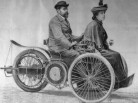 Birkbeck, University of London, has launched a new online journal: 19 - Interdisciplinary Studies in the Long Nineteenth Century. The stated aims of 19 are "to publicise and disseminate the research activities carried out under the auspices of Birkbeck's interdisciplinary Centre for Nineteenth-Century Studies; and to provide practical research and professional development opportunities for the large and active body of postgraduate students currently undertaking research degrees in nineteenth-century studies at the College". It promises to provide easy access to a wide range of stimulating texts, and promises to includes audio-visual subject matter, as it in general encourages discussion of the interrelationships between the verbal and the visual. The journal can be read at www.19.bbk.ac.uk.
Birkbeck, University of London, has launched a new online journal: 19 - Interdisciplinary Studies in the Long Nineteenth Century. The stated aims of 19 are "to publicise and disseminate the research activities carried out under the auspices of Birkbeck's interdisciplinary Centre for Nineteenth-Century Studies; and to provide practical research and professional development opportunities for the large and active body of postgraduate students currently undertaking research degrees in nineteenth-century studies at the College". It promises to provide easy access to a wide range of stimulating texts, and promises to includes audio-visual subject matter, as it in general encourages discussion of the interrelationships between the verbal and the visual. The journal can be read at www.19.bbk.ac.uk.
Science Museum closes photography and cinematography galleries (February 2006)
 The Science Museum in London has closed its photography, cinematography and optics galleries, ending over sixty years of the display of historic cameras and photographic equipment. Some of the equipment will go on display at the National Museum of Photography, Film and Television in Bradford, though most will go into storage. There are no plans for a new photography display. The galleries had included pre-cinema artefacts, optical toys, persistence of vision devices, and early motion picture cameras from Birt Acres, Robert Paul and William Friese-Greene. Its disappearance leaves London very much a poorer place for the historian of early photography and cinematography.
The Science Museum in London has closed its photography, cinematography and optics galleries, ending over sixty years of the display of historic cameras and photographic equipment. Some of the equipment will go on display at the National Museum of Photography, Film and Television in Bradford, though most will go into storage. There are no plans for a new photography display. The galleries had included pre-cinema artefacts, optical toys, persistence of vision devices, and early motion picture cameras from Birt Acres, Robert Paul and William Friese-Greene. Its disappearance leaves London very much a poorer place for the historian of early photography and cinematography.
Historiographics of Victorian Cinema (January 2006)
 The latest feature to be added to this site is Stephen Herbert's The Historiographics of Victorian Cinema, an illustrated essay on images of the Victorian filmmakers from comic strips, comic books and children's books from across the world. The images are each available in high and low resolution versions as downloadable PDFs. The authors of this site welcome any suggestions for additions to this unique graphic gallery of the earliest filmmakers, through the imaginations of later generations of illustrators.
The latest feature to be added to this site is Stephen Herbert's The Historiographics of Victorian Cinema, an illustrated essay on images of the Victorian filmmakers from comic strips, comic books and children's books from across the world. The images are each available in high and low resolution versions as downloadable PDFs. The authors of this site welcome any suggestions for additions to this unique graphic gallery of the earliest filmmakers, through the imaginations of later generations of illustrators.
Early Visual Media discussion group (January 2006)
 A new Google Group has been established by Thomas Weynants, author of the Early Visual Media web site on nineteenth-century image technologies and entertainments. The discussion group, entitled 'Early Visual Media' invites contributions on pre-cinema, optical toys, early vintage photography, early film, the conjuring arts, illusions, apparitions, spiritism, vaudeville, theatre history, street performers, and like topics. To join the list, visit Google Groups.
A new Google Group has been established by Thomas Weynants, author of the Early Visual Media web site on nineteenth-century image technologies and entertainments. The discussion group, entitled 'Early Visual Media' invites contributions on pre-cinema, optical toys, early vintage photography, early film, the conjuring arts, illusions, apparitions, spiritism, vaudeville, theatre history, street performers, and like topics. To join the list, visit Google Groups.
Cinema Before Cinema (November 2005)
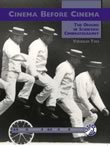 The British Universities Film & Video Council has published an English translation of Virgilio Tosi's Il cinema prima di Lumière, first published in Italian in 1984. Tosi's book tells the story of the scientific development of cinema in the nineteenth century, with emphasis on the work of Muybridge, Marey and the first scientific filmmakers, such as Dr Doyen and Lucien Bull. The book has been retitled Cinema Before Cinema: The Origins of Scientific Cinema, and has an introduction by Paolo Cherchi Usai. The film is to be accompanied by a DVD of The Origins of Scientific Cinema, Tosi's three-part documentary which recreates the work of the nineteenth-century chronophotographers in details, and has a number of rare films from pioneers such as A.C. Haddon, Gheorghe Marinescu and Wilhelm Pfeffer. The book is available from Amazon and the DVD is available from December from the BUFVC.
The British Universities Film & Video Council has published an English translation of Virgilio Tosi's Il cinema prima di Lumière, first published in Italian in 1984. Tosi's book tells the story of the scientific development of cinema in the nineteenth century, with emphasis on the work of Muybridge, Marey and the first scientific filmmakers, such as Dr Doyen and Lucien Bull. The book has been retitled Cinema Before Cinema: The Origins of Scientific Cinema, and has an introduction by Paolo Cherchi Usai. The film is to be accompanied by a DVD of The Origins of Scientific Cinema, Tosi's three-part documentary which recreates the work of the nineteenth-century chronophotographers in details, and has a number of rare films from pioneers such as A.C. Haddon, Gheorghe Marinescu and Wilhelm Pfeffer. The book is available from Amazon and the DVD is available from December from the BUFVC.
Anima no more (November 2005)
 Sadly, Charl Luccassen's wonderful web site Anima has been taken down. The site was dedicated to chronophotography, proto-cinema and optical toys, and included some hypnotic animations of the work of nineteenth century sequence photographers such as Muybridge, Marey and Albert Londe. Unfortunately, it was these animations (frequently plundered without permission by other sites) and rights issues over some images which has led the author to close what was undoubtedly the best web site on its subject anywhere.
Sadly, Charl Luccassen's wonderful web site Anima has been taken down. The site was dedicated to chronophotography, proto-cinema and optical toys, and included some hypnotic animations of the work of nineteenth century sequence photographers such as Muybridge, Marey and Albert Londe. Unfortunately, it was these animations (frequently plundered without permission by other sites) and rights issues over some images which has led the author to close what was undoubtedly the best web site on its subject anywhere.
Georges Méliès' Cléopâtre discovered (September 2005)
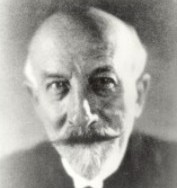 A copy of Georges Méliès' 1899 film Cléopâtre has been discovered in France, according to a report from Agence France Presse. Méliès produced over 500 films between 1896 and 1912, of which some 170 survive. The short film shows a diabolic figure cutting Cleopatra's mummy into pieces, before magically reconstructing it. For further information, see Le Monde (in French), although so far little information has been released concerning the film's contents, or indeed its present whereabouts.
A copy of Georges Méliès' 1899 film Cléopâtre has been discovered in France, according to a report from Agence France Presse. Méliès produced over 500 films between 1896 and 1912, of which some 170 survive. The short film shows a diabolic figure cutting Cleopatra's mummy into pieces, before magically reconstructing it. For further information, see Le Monde (in French), although so far little information has been released concerning the film's contents, or indeed its present whereabouts.
Hopwood on CD (September 2005)
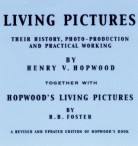 The Projection Box has published a CD edition of Henry V. Hopwood's 1899 publication Living Pictures: Their History, Photo-Production and Practical Working, together with R.B. Foster's 1915 revision of the text, Hopwood's Living Pictures. Hopwood was Custodian in the library of the Patent Office in London, and produced a thoroughly researched and lucid account of the new science. This classic text, with its detailed patent descriptions and sound comments on production and presentation, has been admired by film historians ever since. The CD is one of a series published by The Projection Box, including Magic Lantern Inventions and Motion Picture Equipment Catalogues 1900-1910. For further details, visit http://easyweb.easynet.co.uk/~s-herbert/hopwoods.htm.
The Projection Box has published a CD edition of Henry V. Hopwood's 1899 publication Living Pictures: Their History, Photo-Production and Practical Working, together with R.B. Foster's 1915 revision of the text, Hopwood's Living Pictures. Hopwood was Custodian in the library of the Patent Office in London, and produced a thoroughly researched and lucid account of the new science. This classic text, with its detailed patent descriptions and sound comments on production and presentation, has been admired by film historians ever since. The CD is one of a series published by The Projection Box, including Magic Lantern Inventions and Motion Picture Equipment Catalogues 1900-1910. For further details, visit http://easyweb.easynet.co.uk/~s-herbert/hopwoods.htm.
Moving Image Technology (August 2005)
 Leo Enticknap's long-awaited book Moving Image Technology: From Zoetrope to Digital has been published by Wallflower Press. The book provides a thorough and lucid history of film, video and sound technologies, from the 'pre-cinema' era to the digital age. The book integrates economic, cultural and theoretical concerns within its comprehensive survey, often providing provocative argument in its insistence on an understanding of moving image technologies from those who would study the art of film. There is much that relates to Victorian cinema, in such chapters as 'Film', 'Cinematography and Film Formats', 'Colour' and 'Sound'. Available from Amazon.co.uk.
Leo Enticknap's long-awaited book Moving Image Technology: From Zoetrope to Digital has been published by Wallflower Press. The book provides a thorough and lucid history of film, video and sound technologies, from the 'pre-cinema' era to the digital age. The book integrates economic, cultural and theoretical concerns within its comprehensive survey, often providing provocative argument in its insistence on an understanding of moving image technologies from those who would study the art of film. There is much that relates to Victorian cinema, in such chapters as 'Film', 'Cinematography and Film Formats', 'Colour' and 'Sound'. Available from Amazon.co.uk.
Early Cinema: Primitives and Pioneers (August 2005)
 The British Film Institute has re-issued its influential 1980s video compilation Primitives and Pioneers on DVD for the first time, with the original commentary by film historian Barry Salt and a new piano score by Neil Brand and others. Originally made as a two-part videotape release, the combined double-disc DVD contains 60 films from the 1895-1910 period, taken from the collection of the National Film and Television Archive. Victorian filmmakers featured on the discs include Auguste and Louis Lumière, Georges Méliès, Thomas Edison, Cecil Hepworth and Edwin S. Porter. Available from the BFI and Amazon.co.uk.
The British Film Institute has re-issued its influential 1980s video compilation Primitives and Pioneers on DVD for the first time, with the original commentary by film historian Barry Salt and a new piano score by Neil Brand and others. Originally made as a two-part videotape release, the combined double-disc DVD contains 60 films from the 1895-1910 period, taken from the collection of the National Film and Television Archive. Victorian filmmakers featured on the discs include Auguste and Louis Lumière, Georges Méliès, Thomas Edison, Cecil Hepworth and Edwin S. Porter. Available from the BFI and Amazon.co.uk.
Visual Delights Two (July 2005)
 Papers from the 2002 Visual Delights Conference at the National Fairground Archive, University of Sheffield, have now been published as Visual Delights Two: Exhibition and Reception, edited by Vanessa Toulmin and Simon Popple (John Libbey, 2005). Articles related to Victorian cinema include: 'Film and Postcards - Cross Media Symbiosis in Early Bamforth Films' by Richard Brown; 'The Neo-Institutionalisation of Cinema as a New Medium' by André Gaudreault and Philippe Marion; 'The Sensation of the Century: Robert Paul and Film Exhibition in Brighton in 1896/7' by Frank Gray; 'The Brighton School and the Quest for Natural Colour' by Luke McKernan; 'The May Irwin Kiss: Performance and the Beginnings of Cinema' by Charles Musser; and '"What the Vicar Saw" or "The Kiss in The Park"' by David R. Williams. Available from Amazon.co.uk.
Papers from the 2002 Visual Delights Conference at the National Fairground Archive, University of Sheffield, have now been published as Visual Delights Two: Exhibition and Reception, edited by Vanessa Toulmin and Simon Popple (John Libbey, 2005). Articles related to Victorian cinema include: 'Film and Postcards - Cross Media Symbiosis in Early Bamforth Films' by Richard Brown; 'The Neo-Institutionalisation of Cinema as a New Medium' by André Gaudreault and Philippe Marion; 'The Sensation of the Century: Robert Paul and Film Exhibition in Brighton in 1896/7' by Frank Gray; 'The Brighton School and the Quest for Natural Colour' by Luke McKernan; 'The May Irwin Kiss: Performance and the Beginnings of Cinema' by Charles Musser; and '"What the Vicar Saw" or "The Kiss in The Park"' by David R. Williams. Available from Amazon.co.uk.
Electric Edwardians (May 2005)
 The British Film Institute is releasing Electric Edwardians: The Films of Mitchell & Kenyon, a follow-up DVD to the very successful The Lost World of Mitchell and Kenyon DVD, originally a three-part BBC television series based on the work of the Blackburn filmmakers Sagar Mitchell and James Kenyon. The new DVD presents the films in their entirety rather than the extracts featured in the television series. There are thirty-five titles (plus five 'hidden' items), arranged thematically, with a number of extras including a voiceover commentary by Vanessa Toulmin of the National Fairground Archive, and an introduction by film historian Tom Gunning, voiced by the actor Paul McGann. For further details, see the BFI website. Electric Edwardians is available in the United States from Milestone Films.
The British Film Institute is releasing Electric Edwardians: The Films of Mitchell & Kenyon, a follow-up DVD to the very successful The Lost World of Mitchell and Kenyon DVD, originally a three-part BBC television series based on the work of the Blackburn filmmakers Sagar Mitchell and James Kenyon. The new DVD presents the films in their entirety rather than the extracts featured in the television series. There are thirty-five titles (plus five 'hidden' items), arranged thematically, with a number of extras including a voiceover commentary by Vanessa Toulmin of the National Fairground Archive, and an introduction by film historian Tom Gunning, voiced by the actor Paul McGann. For further details, see the BFI website. Electric Edwardians is available in the United States from Milestone Films.
Early Popular Visual Culture (May 2005)
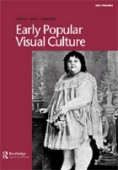 The latest of issue of the retitled and repackaged journal Early Popular Visual Culture (formerly Living Pictures) has been published. Now handled by Routledge, the multidisciplinary journal has extended its coverage to all popular forms of image production (still and moving) to 1930, covering magic cinema, photography, magic lanterns and music hall within the fields of entertainment, education, science, advertising and the domestic environment. The new issue includes articles on Alexander Black, Birt Acres and Ludwig Stollwerck, and the Who's Who of Victorian Cinema web site. For further details, visit www.tandf.co.uk.
The latest of issue of the retitled and repackaged journal Early Popular Visual Culture (formerly Living Pictures) has been published. Now handled by Routledge, the multidisciplinary journal has extended its coverage to all popular forms of image production (still and moving) to 1930, covering magic cinema, photography, magic lanterns and music hall within the fields of entertainment, education, science, advertising and the domestic environment. The new issue includes articles on Alexander Black, Birt Acres and Ludwig Stollwerck, and the Who's Who of Victorian Cinema web site. For further details, visit www.tandf.co.uk.
Giornate del Cinema Muto (May 2005)
 The twenty-fourth Giornate del Cinema Muto annual festival of silent film will take place 8-15 October 2005. After a number of years in Sacile, this year the festival returns to its traditional home of Pordenone. The themes announced so far include Japanese cinema, the Griffith Project part 9, Ince revisited, André Antoine, and Silly Symphonies. A more detailed programme will be published nearer the time. Further details, including registration and accommodation information, are available from the Giornate web site.
The twenty-fourth Giornate del Cinema Muto annual festival of silent film will take place 8-15 October 2005. After a number of years in Sacile, this year the festival returns to its traditional home of Pordenone. The themes announced so far include Japanese cinema, the Griffith Project part 9, Ince revisited, André Antoine, and Silly Symphonies. A more detailed programme will be published nearer the time. Further details, including registration and accommodation information, are available from the Giornate web site.
Sequences exhibition (April 2005)
 Sequences is an exhibition of contemporary chronophotographic work that uses sequences of images to explore ideas of space, time, movement and duration, in the tradition of the nineteenth-century chronophotographers Eadweard Muybridge, E-J. Marey, Georges Demenÿ, Albert Londe and others. The exhibition, which has already visited several venues, runs from 28 May to 23 July at the Lighthouse, Poole, and 20 August 1 October 2005 at Q Arts, Derby. Further information on the venues and artists is available from the Sequences web sites, and an accompanying book is due to be published by the Projection Box.
Sequences is an exhibition of contemporary chronophotographic work that uses sequences of images to explore ideas of space, time, movement and duration, in the tradition of the nineteenth-century chronophotographers Eadweard Muybridge, E-J. Marey, Georges Demenÿ, Albert Londe and others. The exhibition, which has already visited several venues, runs from 28 May to 23 July at the Lighthouse, Poole, and 20 August 1 October 2005 at Q Arts, Derby. Further information on the venues and artists is available from the Sequences web sites, and an accompanying book is due to be published by the Projection Box.
Encyclopedia of Early Cinema (February 2005)
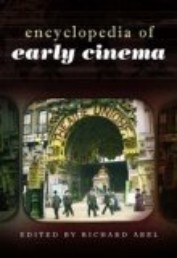 Routledge has published the Encyclopedia of Early Cinema, edited by Richard Abel. It is an exceptional achievement, with ten consultants and nearly 150 contributors who have produced 950 entries over 791 pages that embrace almost very imaginable aspect of scholarship in early cinema, 'both traditional and revisionist'. The book covers filmmakers, performers, technologies, modes of production, audiences and exhibition, and diverse critical approaches. It is also impressively international, going beyond Europe and America to covering filmmaking in Africa, Asia, the Middle East, South and Central America. In covering filmmaking for its first twenty-five years, it therefore serves as an excellent guide to Victorian cinema. At £130, it is most likely to be encountered by researchers on a library shelf, but it is going to be indispensible.
Routledge has published the Encyclopedia of Early Cinema, edited by Richard Abel. It is an exceptional achievement, with ten consultants and nearly 150 contributors who have produced 950 entries over 791 pages that embrace almost very imaginable aspect of scholarship in early cinema, 'both traditional and revisionist'. The book covers filmmakers, performers, technologies, modes of production, audiences and exhibition, and diverse critical approaches. It is also impressively international, going beyond Europe and America to covering filmmaking in Africa, Asia, the Middle East, South and Central America. In covering filmmaking for its first twenty-five years, it therefore serves as an excellent guide to Victorian cinema. At £130, it is most likely to be encountered by researchers on a library shelf, but it is going to be indispensible.
Visual Delights III (January 2005)
 Early Popular Visual Culture (formerly Living Pictures) in association with the National Fairground Archive and the University of Leeds will hold a third event examining the use and exploitation of the projected image within the fields of entertainment, education, science and the domestic environment. The theme of this three-day conference is Magic and Illusion and will be a combination of academic papers, performance and film screenings. The conference incorporates both academic and non-academic historians, collectors and performers and will to bring together the worlds of photography, film and mass visual culture to a wider and more inclusive audience. The conference will take place at the University of Sheffield between 15 and 17 July 2005. For further information, visit http://www.victorianweb.org/mt/vdelights.
Early Popular Visual Culture (formerly Living Pictures) in association with the National Fairground Archive and the University of Leeds will hold a third event examining the use and exploitation of the projected image within the fields of entertainment, education, science and the domestic environment. The theme of this three-day conference is Magic and Illusion and will be a combination of academic papers, performance and film screenings. The conference incorporates both academic and non-academic historians, collectors and performers and will to bring together the worlds of photography, film and mass visual culture to a wider and more inclusive audience. The conference will take place at the University of Sheffield between 15 and 17 July 2005. For further information, visit http://www.victorianweb.org/mt/vdelights.
Mitchell and Kenyon (January 2005)
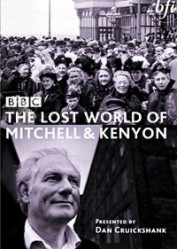 The remarkable collection of 800 Mitchell and Kenyon films is being made public, following the completion of the British Film Institute's restoration programme and detailed research conducted in the films' exhibition history by the National Fairground archive. The premiere screening will be at King George's Hall, Blackburn, on Friday 14 January, and on the same day the BBC will broadcast the first episode in its three-part series The Lost World of Mitchell and Kenyon, with a DVD release to follow. A UK touring programme, 'Electric Edwardians', will open in February. For further information, visit BFI Collections.
The remarkable collection of 800 Mitchell and Kenyon films is being made public, following the completion of the British Film Institute's restoration programme and detailed research conducted in the films' exhibition history by the National Fairground archive. The premiere screening will be at King George's Hall, Blackburn, on Friday 14 January, and on the same day the BBC will broadcast the first episode in its three-part series The Lost World of Mitchell and Kenyon, with a DVD release to follow. A UK touring programme, 'Electric Edwardians', will open in February. For further information, visit BFI Collections.
The Muybridge Bequest (October 2004)
 The Projection Box has published Eadweard Muybridge: The Kingston Museum Bequest. Eadweard Muybridge donated and bequeathed an important collection of his work to the the Royal Borough of Kingston, the town where he was born and where he died in 1904. The book, published to accompany an exhibition at Kingston Museum, gives details of the collection and is richly illustrated with examples of Muybridge's sequence photographs at Palo Alto, the Animal Locomotion sequences of humans and animals taken at the University of Pennsylvania, and beautiful illustration from the moving image discs used in his Zoöpraxiscope projector. The editor, Stephen Herbert, contributes an essay based on extensive new research concerning Muybridge's lectures and Zoöpraxiscope discs. For further details, click here.
The Projection Box has published Eadweard Muybridge: The Kingston Museum Bequest. Eadweard Muybridge donated and bequeathed an important collection of his work to the the Royal Borough of Kingston, the town where he was born and where he died in 1904. The book, published to accompany an exhibition at Kingston Museum, gives details of the collection and is richly illustrated with examples of Muybridge's sequence photographs at Palo Alto, the Animal Locomotion sequences of humans and animals taken at the University of Pennsylvania, and beautiful illustration from the moving image discs used in his Zoöpraxiscope projector. The editor, Stephen Herbert, contributes an essay based on extensive new research concerning Muybridge's lectures and Zoöpraxiscope discs. For further details, click here.
Giornate del Cinema Muto (August 2004)
 The programme for the annual festival of silent film, Le Giornate del Cinema Muto, traditionally held at Pordenone in Italy but currently hosted by the nearby town of Sacile, has been announced. Themes for this year include Dziga Vertov, Britain's 'Forgotten Men' (including Anthony Asquith), the eighth year of the D.W. Griffith Project (a project to show all of Griffith's surviving films, running over a number of years), filmmakers in New Jersey (including Alice Guy, arguably the world's first woman filmmaker), the conclusion of the Mitchell & Kenyon project featuring restorations from the National Film and Television Archive, and silent filmmaking today. The festival runs 9-16 October. For further details, visit the festival website.
The programme for the annual festival of silent film, Le Giornate del Cinema Muto, traditionally held at Pordenone in Italy but currently hosted by the nearby town of Sacile, has been announced. Themes for this year include Dziga Vertov, Britain's 'Forgotten Men' (including Anthony Asquith), the eighth year of the D.W. Griffith Project (a project to show all of Griffith's surviving films, running over a number of years), filmmakers in New Jersey (including Alice Guy, arguably the world's first woman filmmaker), the conclusion of the Mitchell & Kenyon project featuring restorations from the National Film and Television Archive, and silent filmmaking today. The festival runs 9-16 October. For further details, visit the festival website.
Transit of Venus (June 2004)
 8 June 2004 sees the transit of Venus across the Sun, the first time that this event has been witnessed from Earth since 1882. On 8 December 1874 the transit was recorded by the French astronomer Jules Janssen using a multi-expsoure camera of his own invention. Janssen's clockwork 'revolver' took forty-eight exposures in seventy-two seconds on a daguerrotype disc. Janssen's work in turn greatly influenced the chronophotographic experiments of E-J. Marey and served as part of the technological chain that lead to the full invention of cinematography. Janssen's images can be viewed on the Anima website, while the photographic sequences taken by Professor David Peck Todd (pictured) in 1882 can be seen in animated form at SkyandTelescope.com
8 June 2004 sees the transit of Venus across the Sun, the first time that this event has been witnessed from Earth since 1882. On 8 December 1874 the transit was recorded by the French astronomer Jules Janssen using a multi-expsoure camera of his own invention. Janssen's clockwork 'revolver' took forty-eight exposures in seventy-two seconds on a daguerrotype disc. Janssen's work in turn greatly influenced the chronophotographic experiments of E-J. Marey and served as part of the technological chain that lead to the full invention of cinematography. Janssen's images can be viewed on the Anima website, while the photographic sequences taken by Professor David Peck Todd (pictured) in 1882 can be seen in animated form at SkyandTelescope.com
Azerbaijan's first filmmaker (March 2004)
 The launch of the Who's Who of Victorian Cinema website has seen a flurry of new information being offered by users. Among the most interesting is news of A.H. Mishon, Azerbaijan's first filmmaker. Previously unknown to early film historians, and not even known about in his native land until 1996, Mishon was a French-born photographer who had been a photographer in Baku for many years before bringing a Lumière Cinématographe to the town in 1898, where he gave a show of locally-filmed scenes (including oil fires and a comedy filmed in a local park) on 2 August. His films were subsequently featured at the Paris Universal Exposition in 1900.
The launch of the Who's Who of Victorian Cinema website has seen a flurry of new information being offered by users. Among the most interesting is news of A.H. Mishon, Azerbaijan's first filmmaker. Previously unknown to early film historians, and not even known about in his native land until 1996, Mishon was a French-born photographer who had been a photographer in Baku for many years before bringing a Lumière Cinématographe to the town in 1898, where he gave a show of locally-filmed scenes (including oil fires and a comedy filmed in a local park) on 2 August. His films were subsequently featured at the Paris Universal Exposition in 1900.
Launch of Who's Who of Victorian Cinema website (February 2004)
 A website based on the 1996 publication Who's Who of Victorian Cinema: A Worldwide Survey, edited by Stephen Herbert and Luke McKernan, went live on 22 February 2004. The website, available at www.victorian-cinema.net, reproduces all of the original book, with nearly 300 biographies of Victorian film pioneers, and adds a number of new names as well as additional features and background resources. The entries have been written by twenty-six contributors from around the world, and further contributions are being actively sought by the editors. The site includes a number of new features, including illustrations of types of Victorian film technology and a Resources section.
A website based on the 1996 publication Who's Who of Victorian Cinema: A Worldwide Survey, edited by Stephen Herbert and Luke McKernan, went live on 22 February 2004. The website, available at www.victorian-cinema.net, reproduces all of the original book, with nearly 300 biographies of Victorian film pioneers, and adds a number of new names as well as additional features and background resources. The entries have been written by twenty-six contributors from around the world, and further contributions are being actively sought by the editors. The site includes a number of new features, including illustrations of types of Victorian film technology and a Resources section.
Has Le Prince been found? (January 2004)
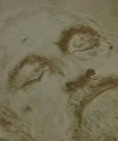 A Yorkshire Television programme, Inside Out, may have solved the 114-year mystery of what happened to Louis Augustin Aimé Le Prince, arguably the first person to take a motion picture film. Le Prince disappeared after catching a train from Dijon to Paris on 16 September 1890. Retired detective Robert Taylor, employed by the programme, located Paris police records which record the body of a man taken from the Seine at this date. A photograph exists which bears a strong resemblance to Le Prince. It cannot be said with certainty that the Le Prince mystery has been solved, but it does now seem very likely that he died from drowning soon after his disappearance.
A Yorkshire Television programme, Inside Out, may have solved the 114-year mystery of what happened to Louis Augustin Aimé Le Prince, arguably the first person to take a motion picture film. Le Prince disappeared after catching a train from Dijon to Paris on 16 September 1890. Retired detective Robert Taylor, employed by the programme, located Paris police records which record the body of a man taken from the Seine at this date. A photograph exists which bears a strong resemblance to Le Prince. It cannot be said with certainty that the Le Prince mystery has been solved, but it does now seem very likely that he died from drowning soon after his disappearance.
